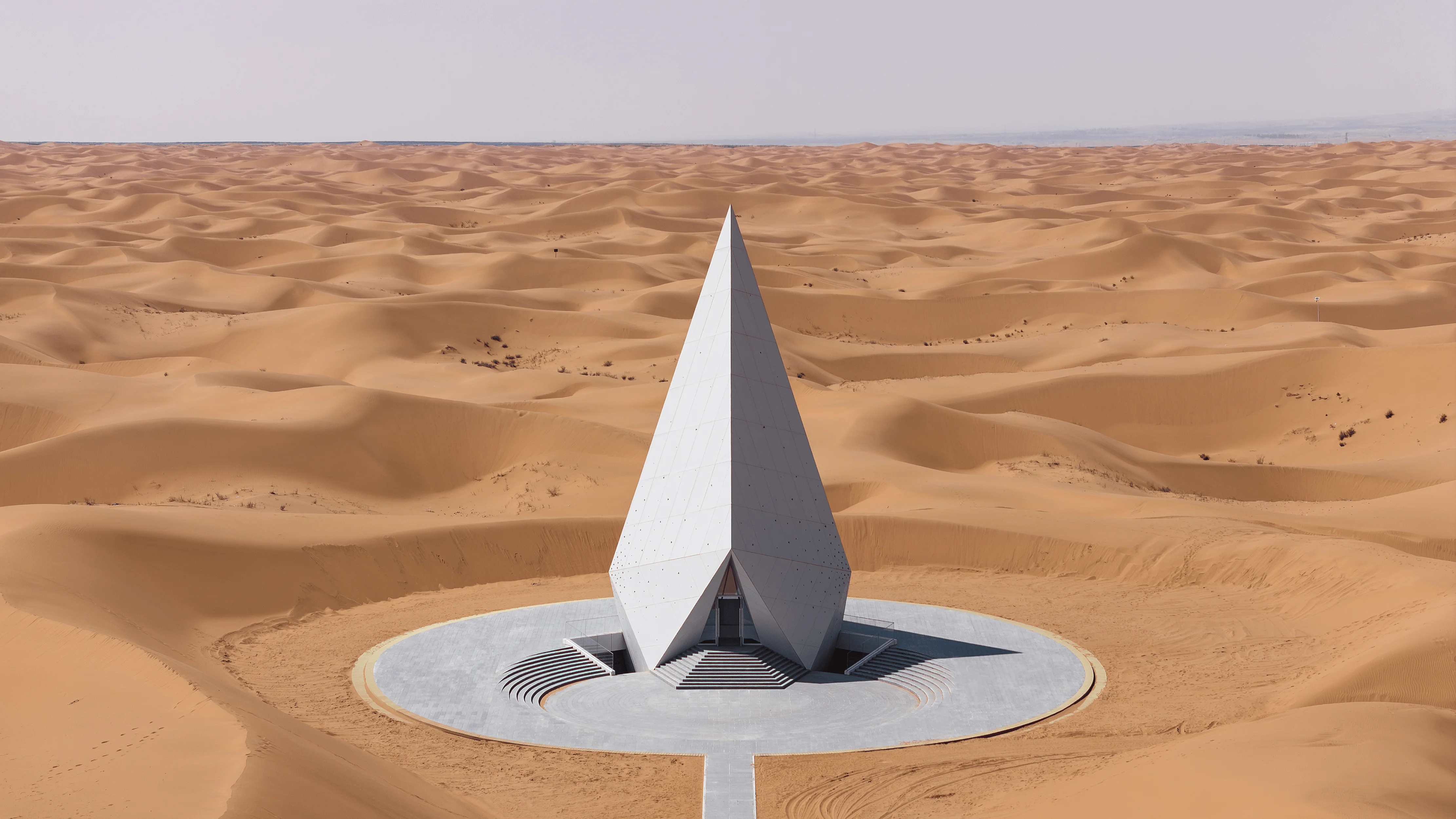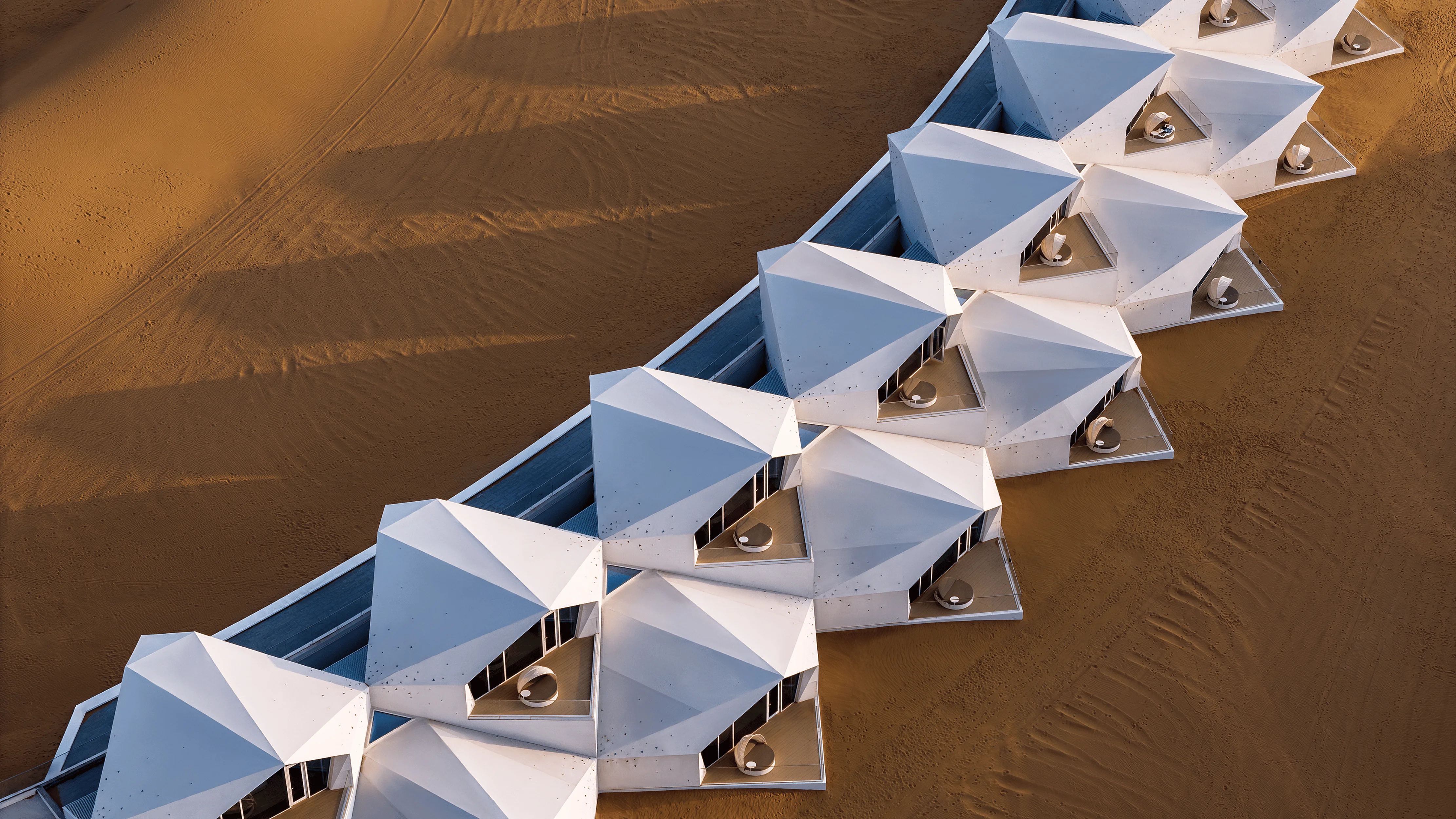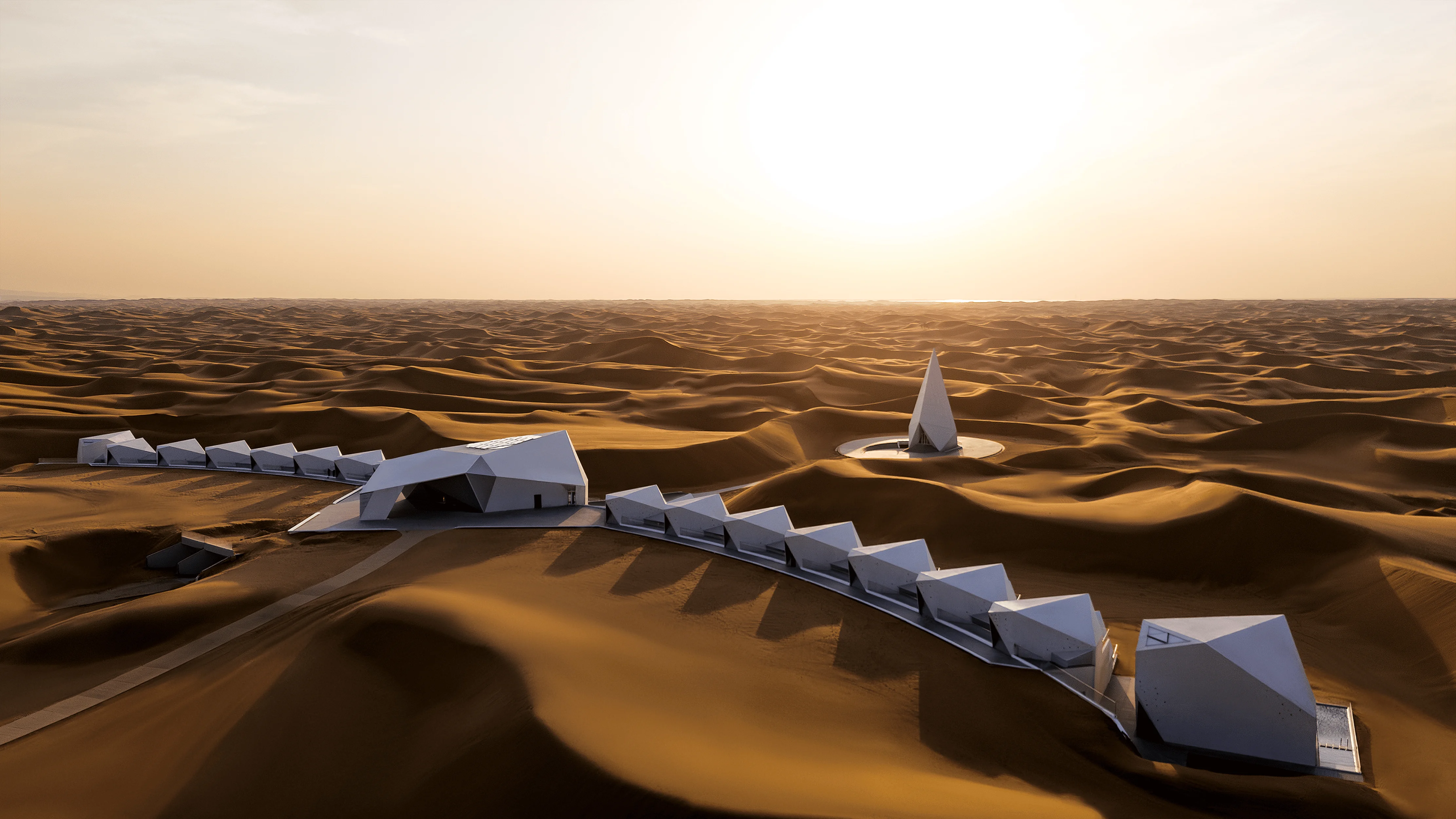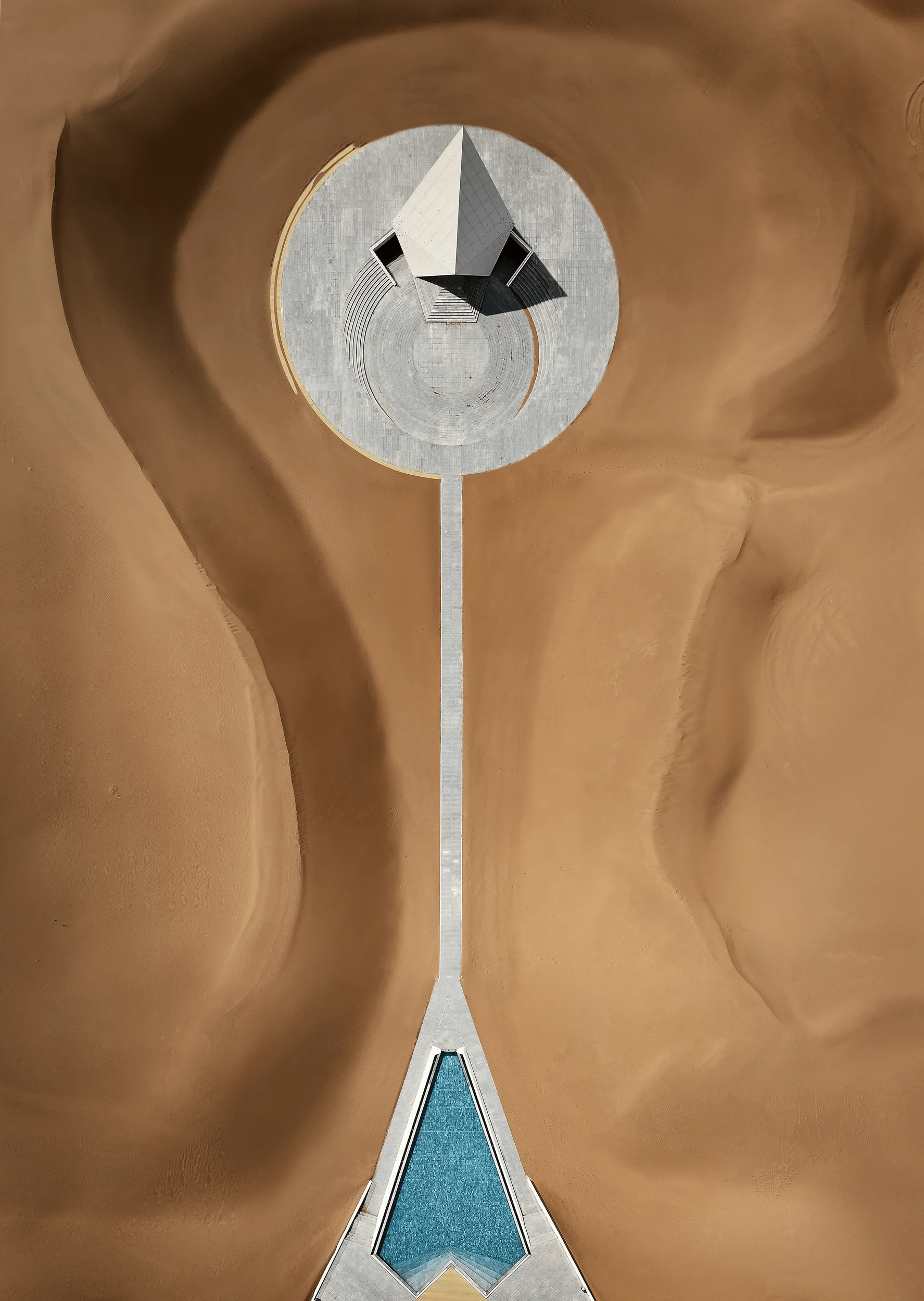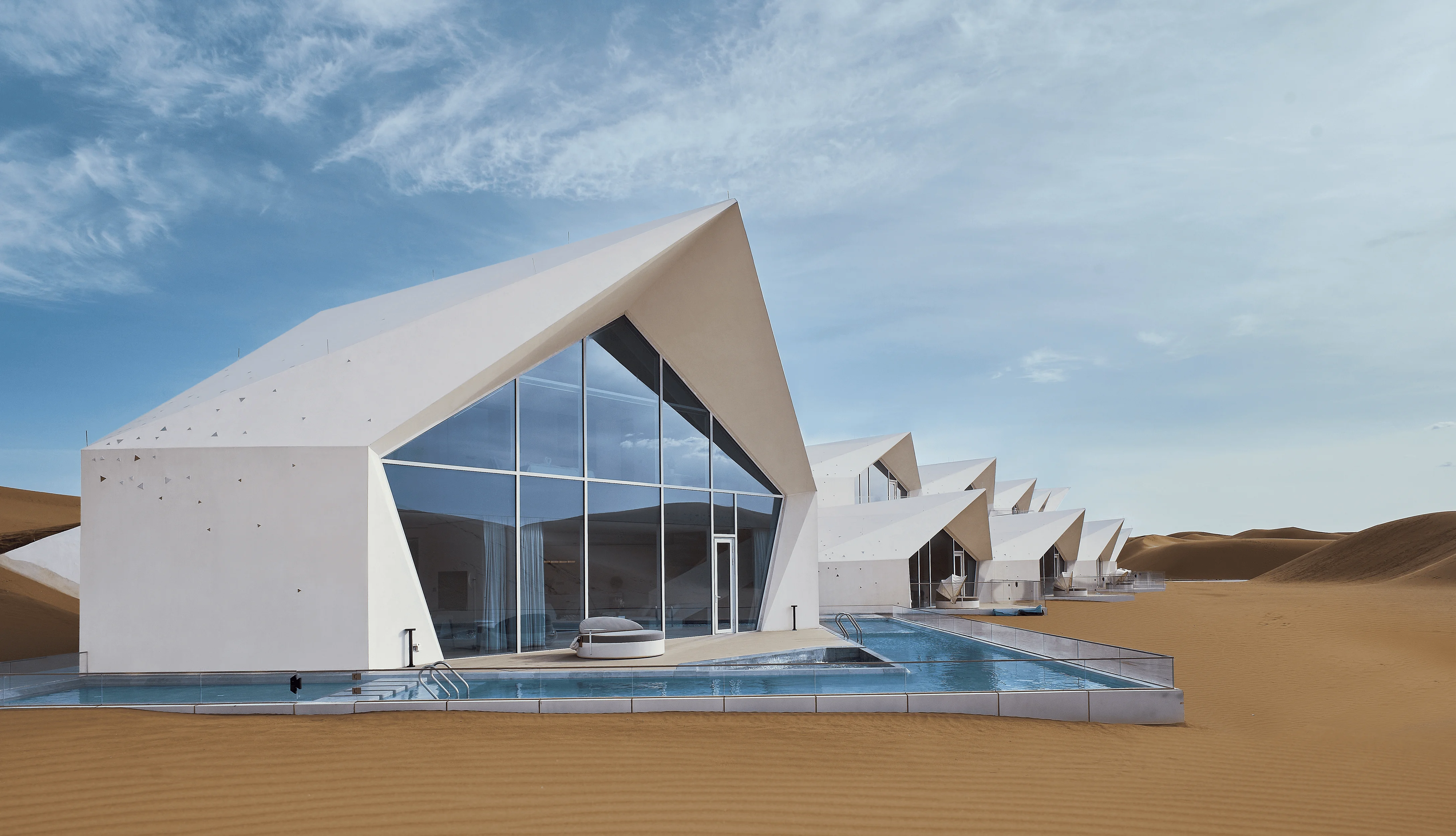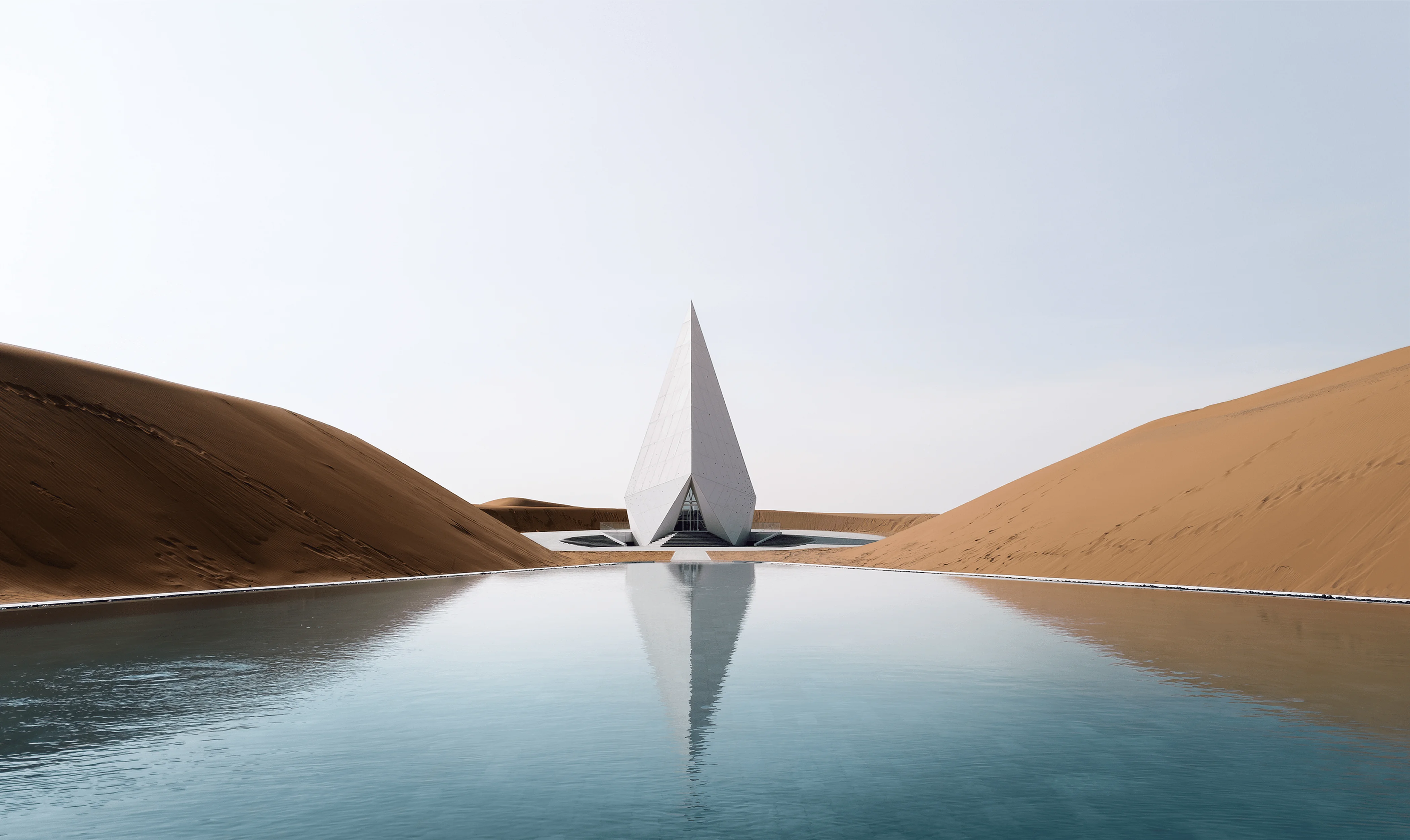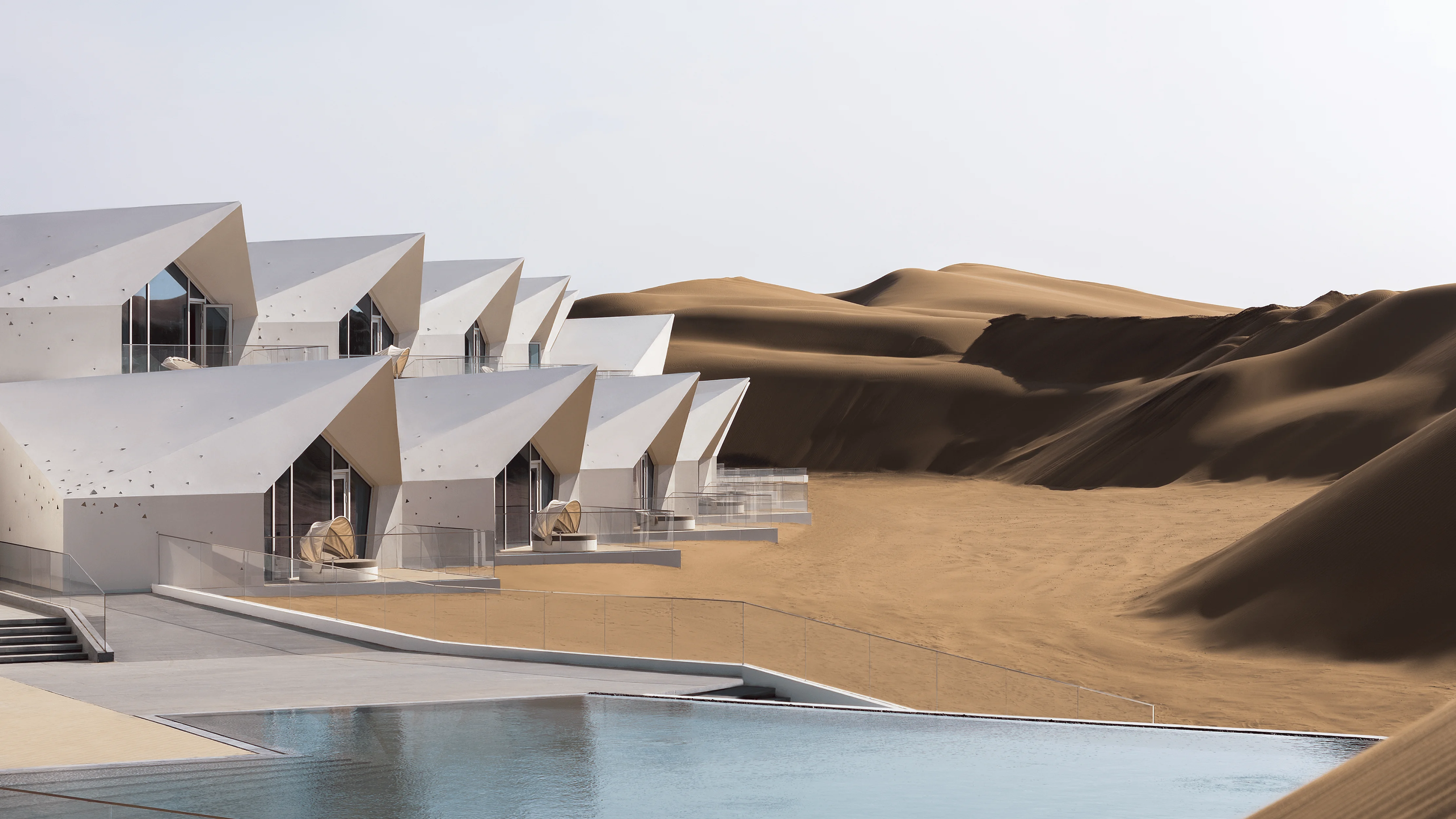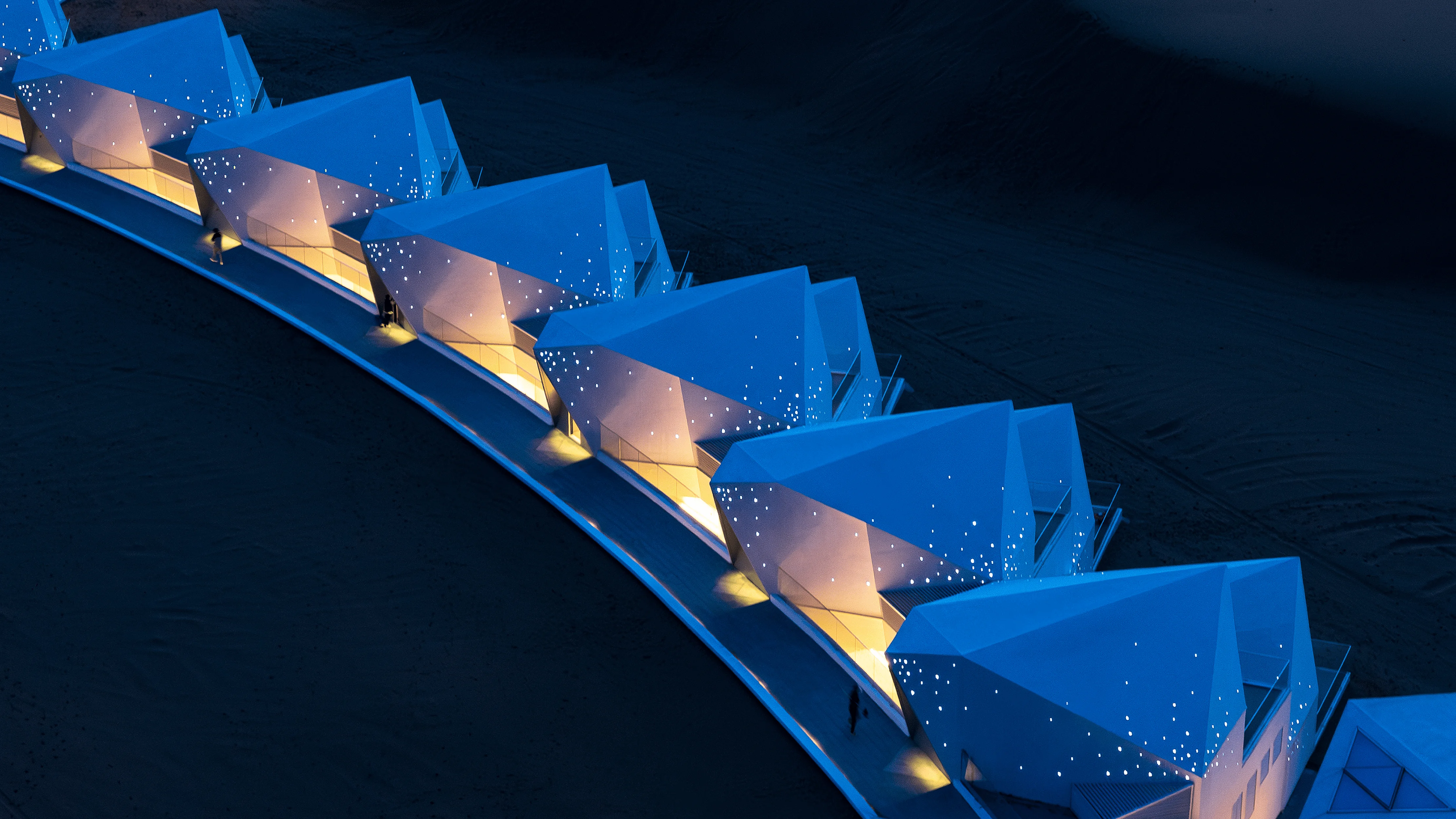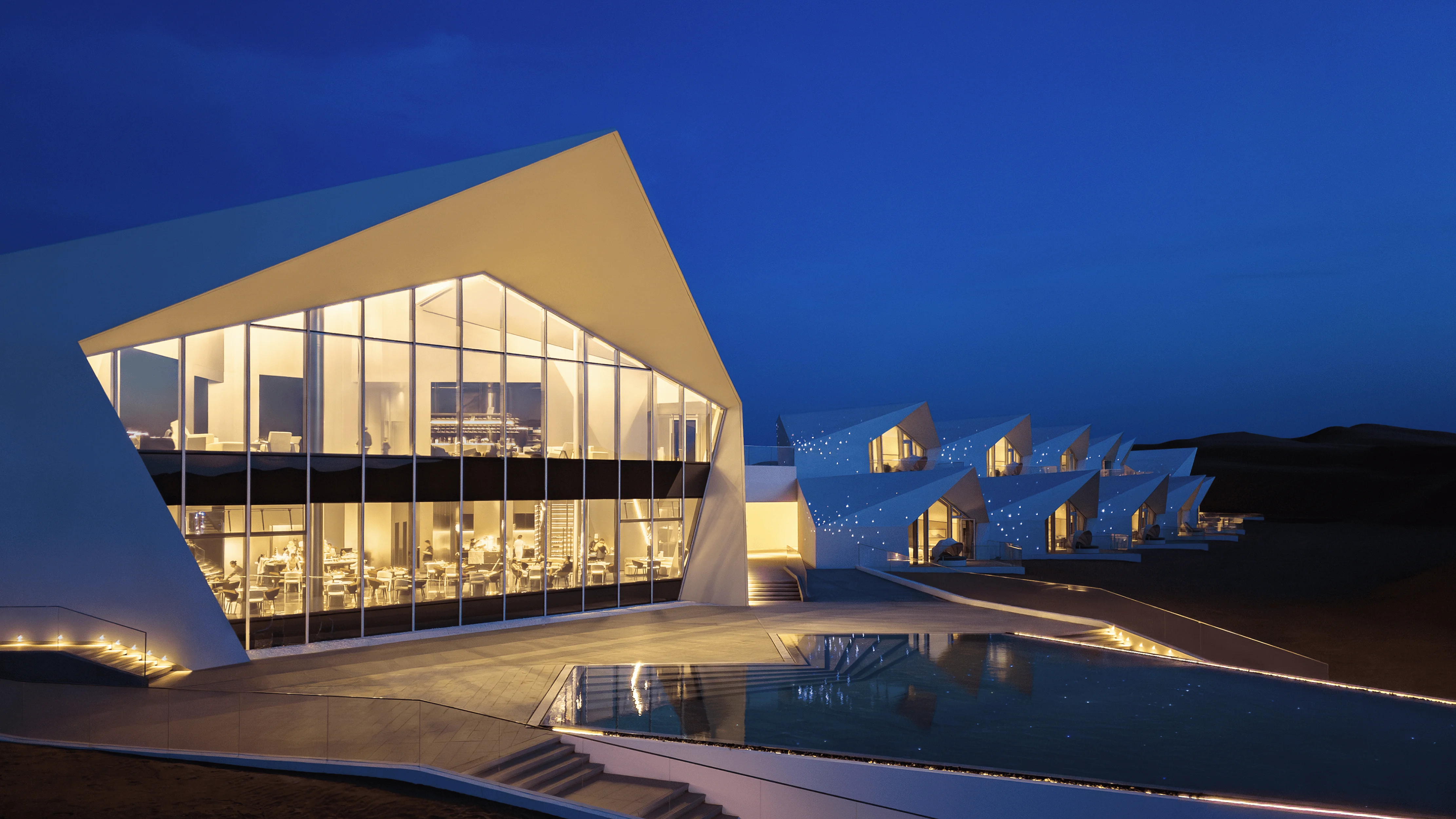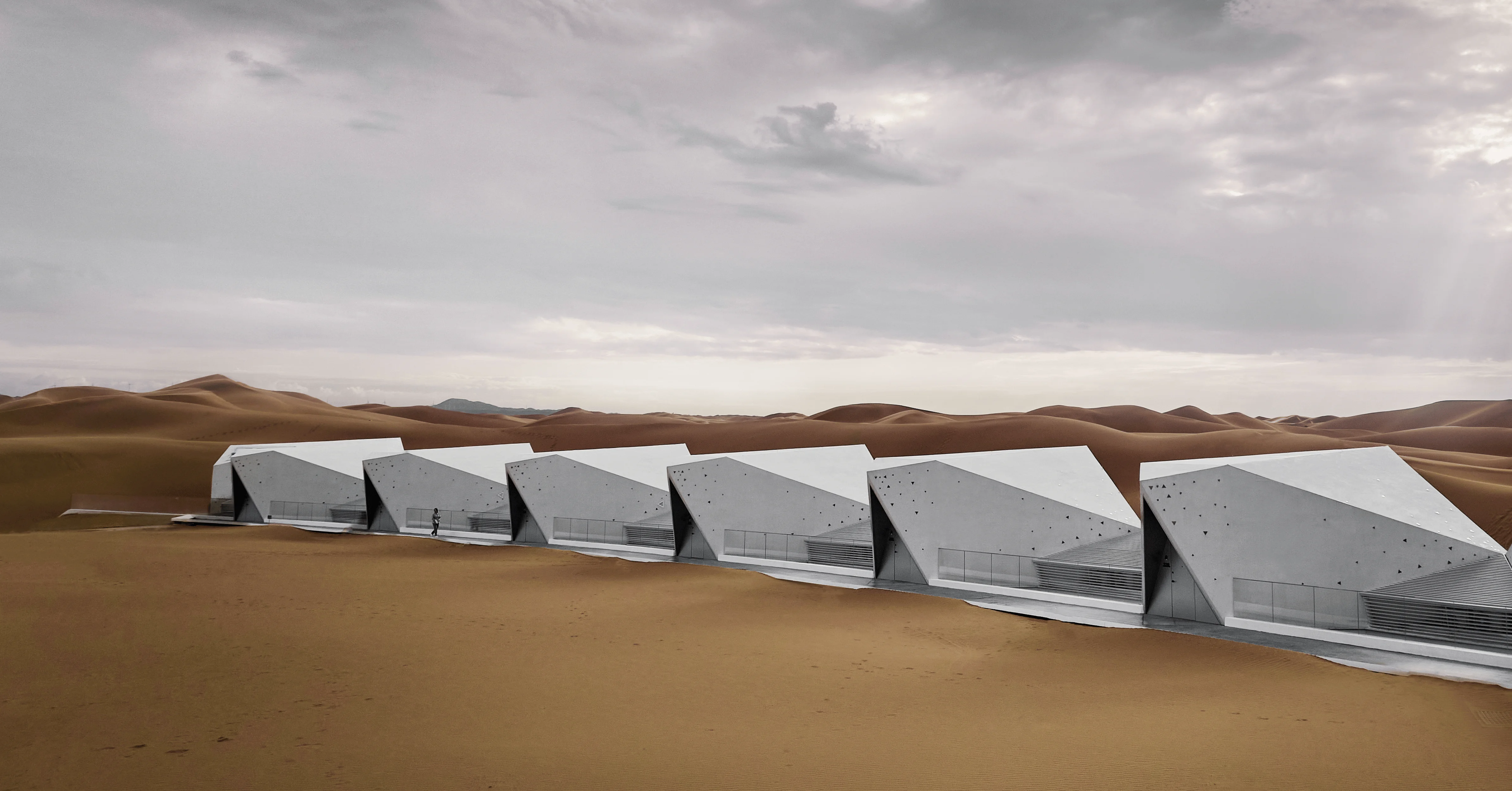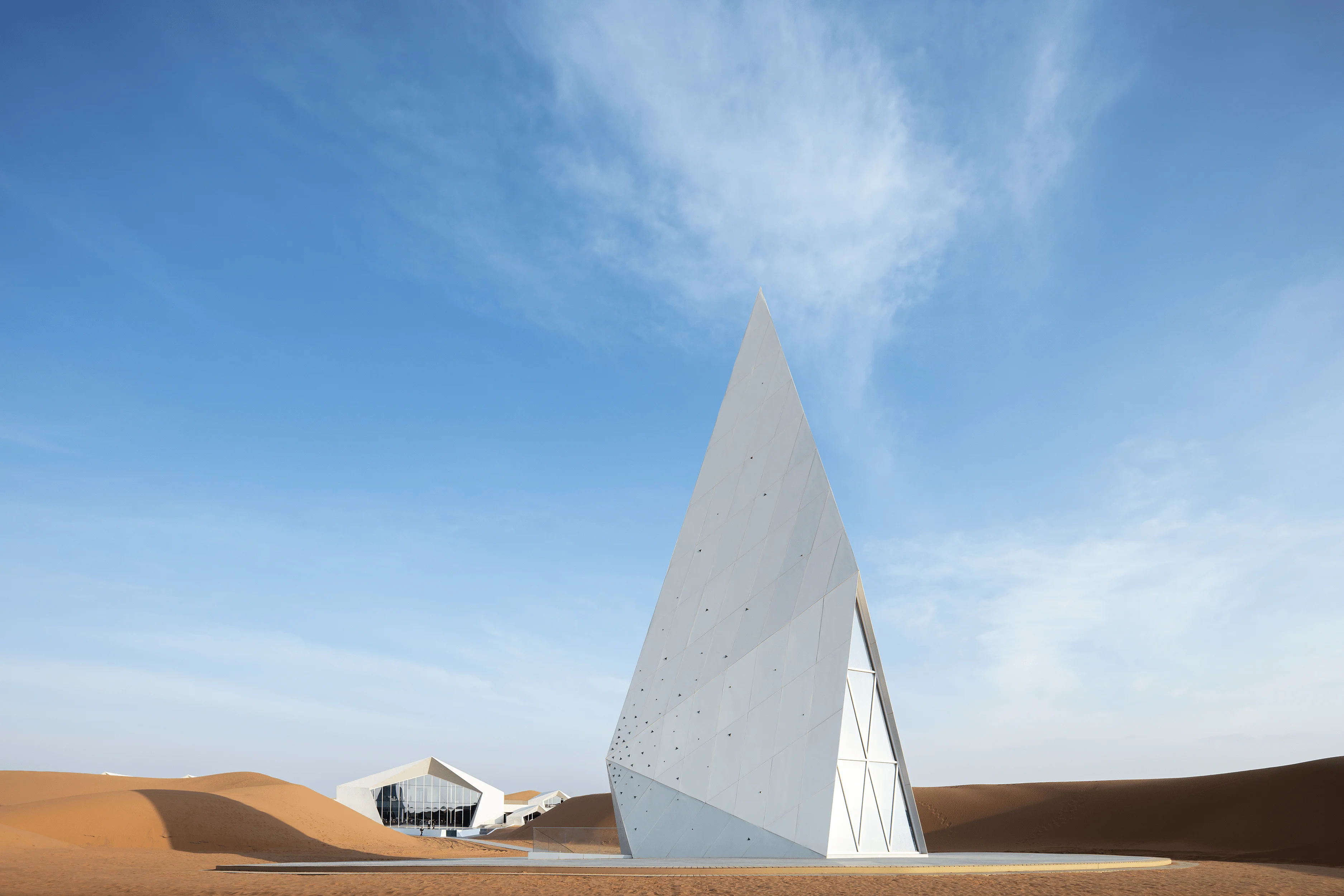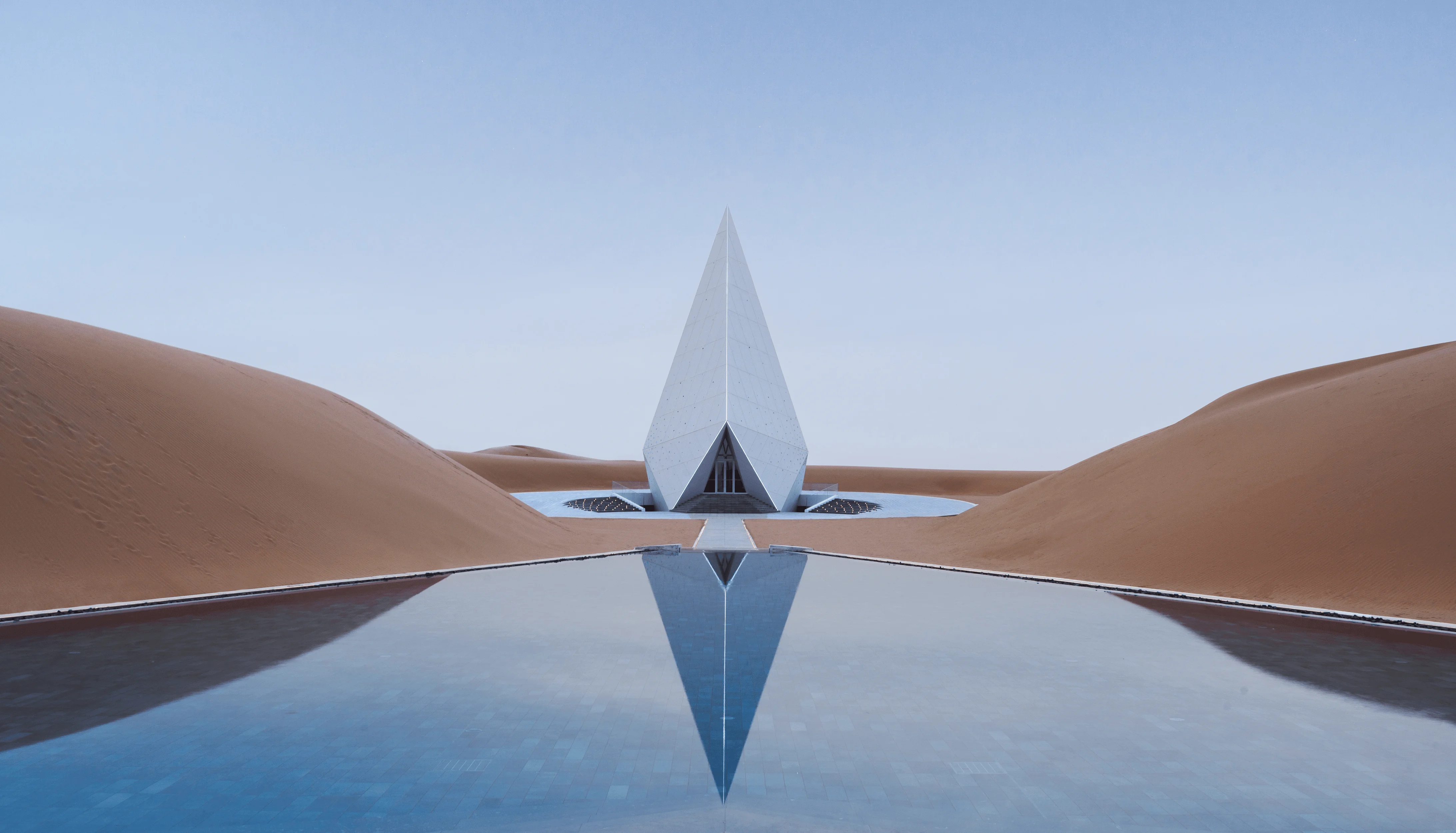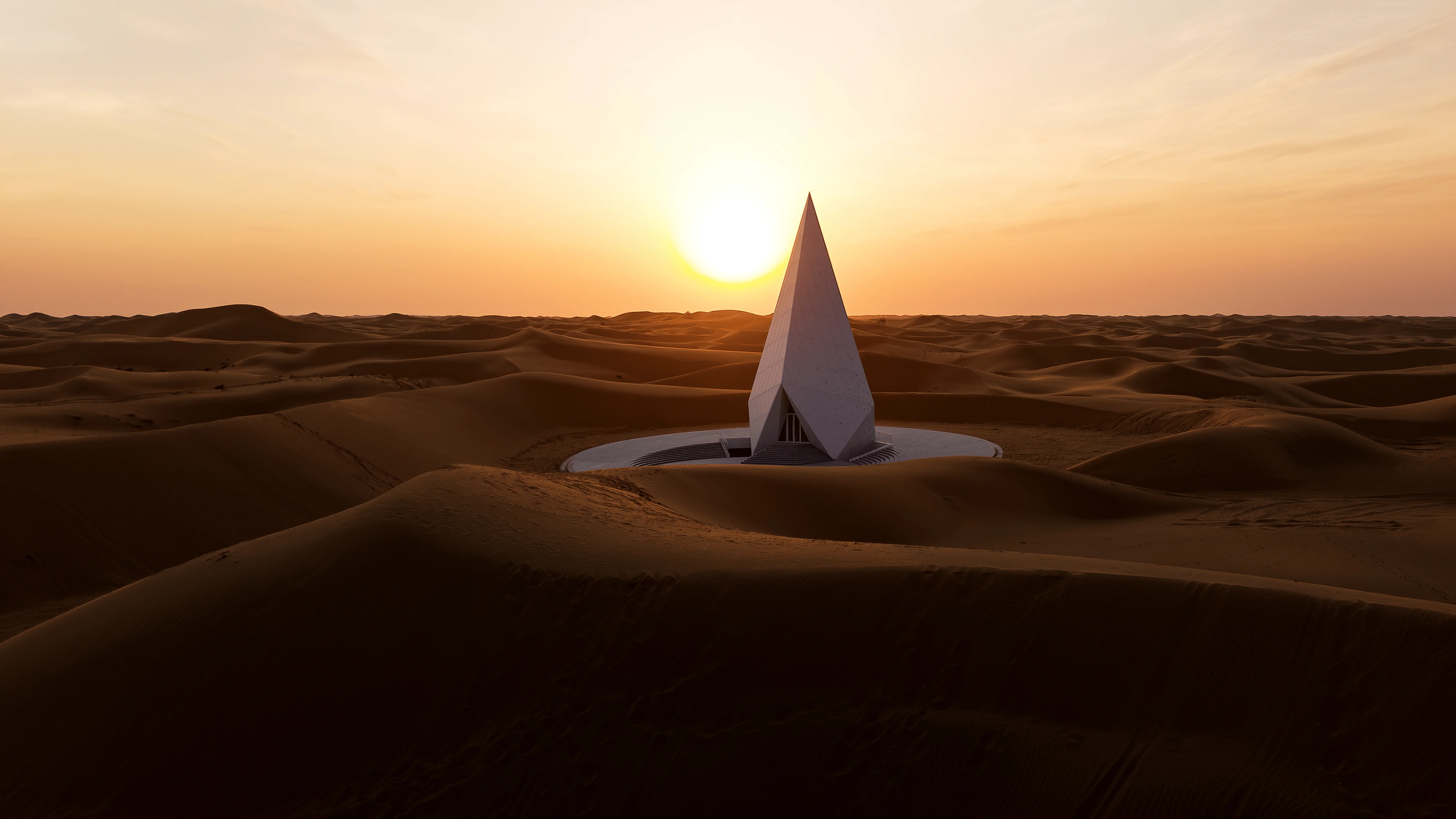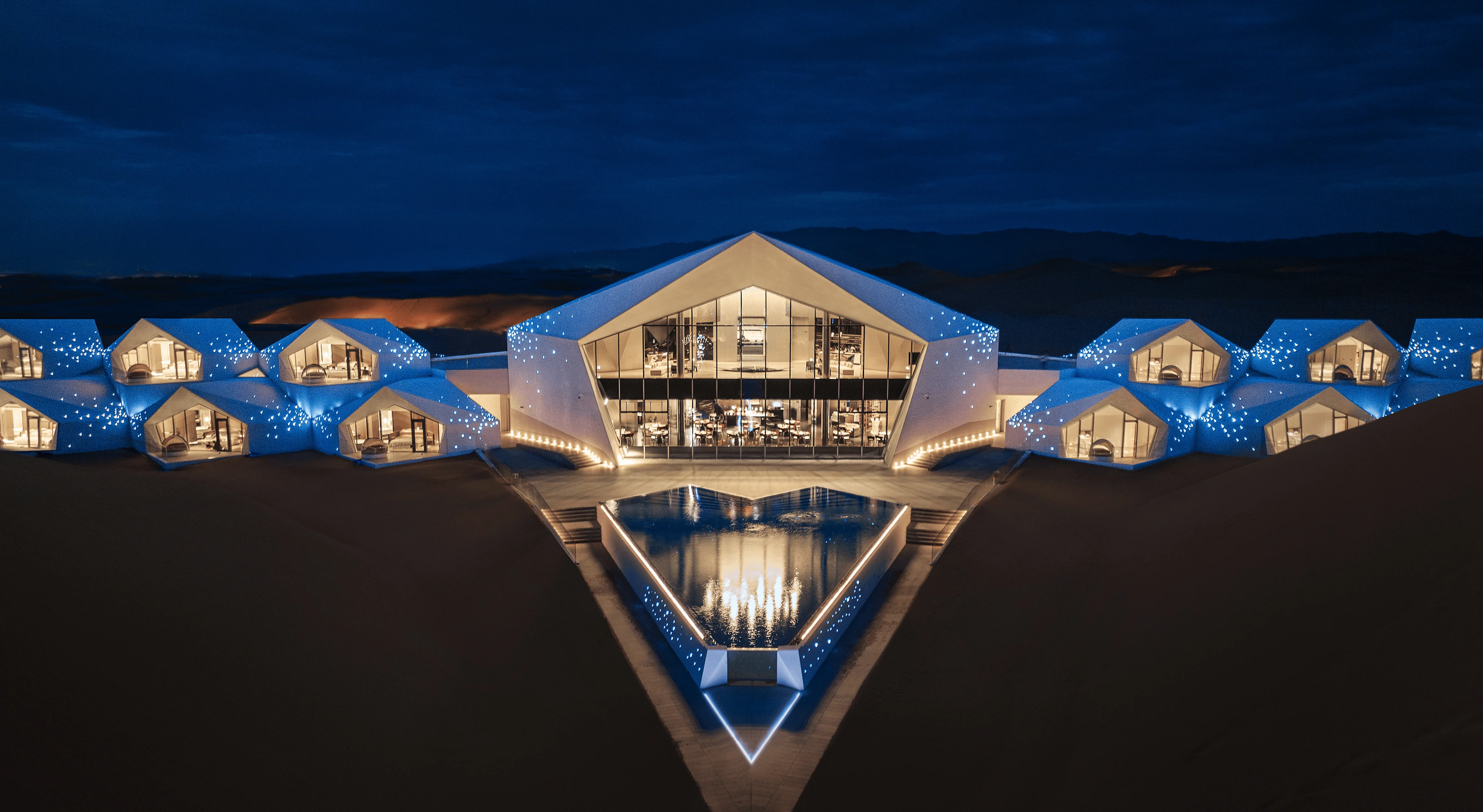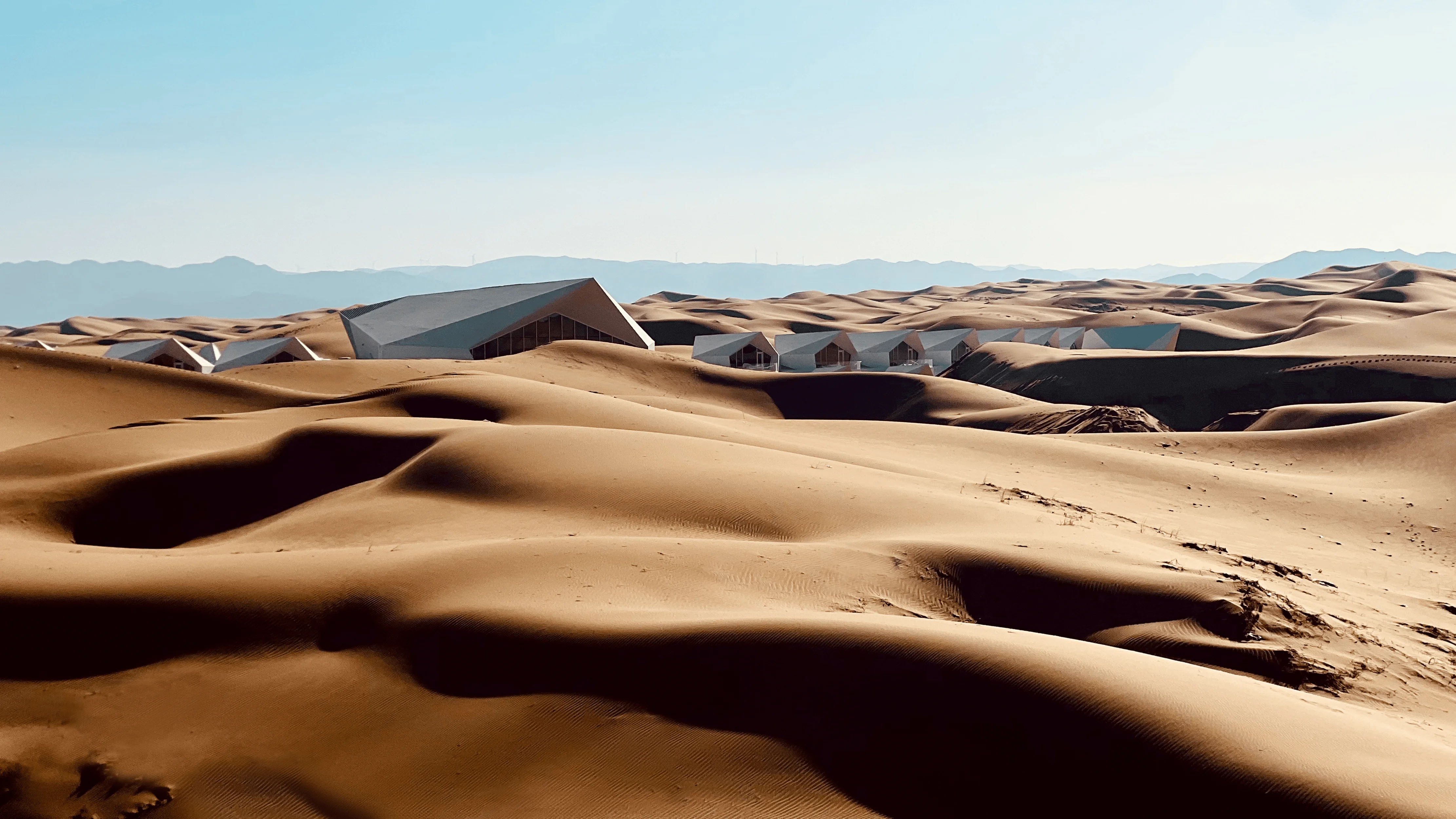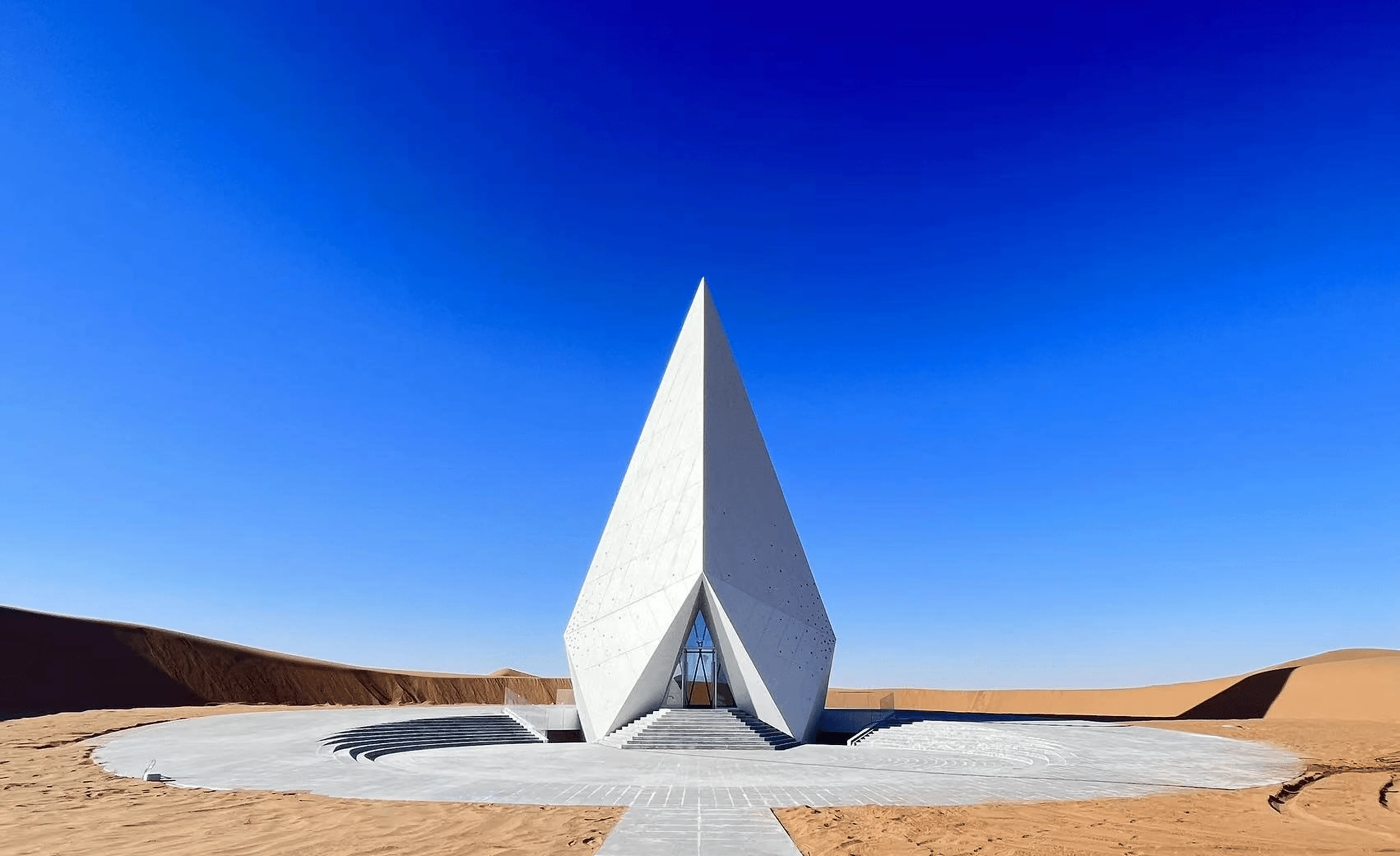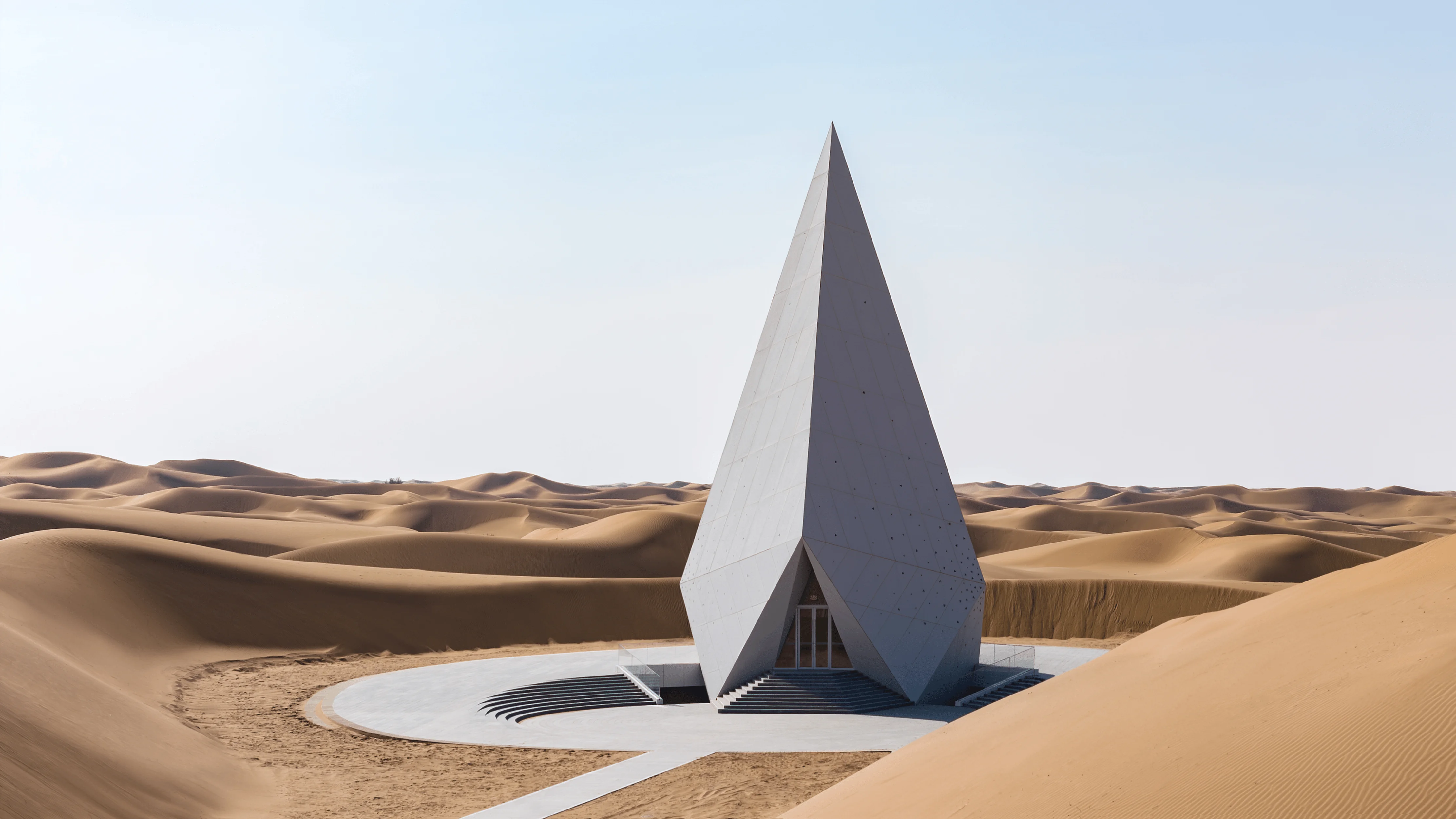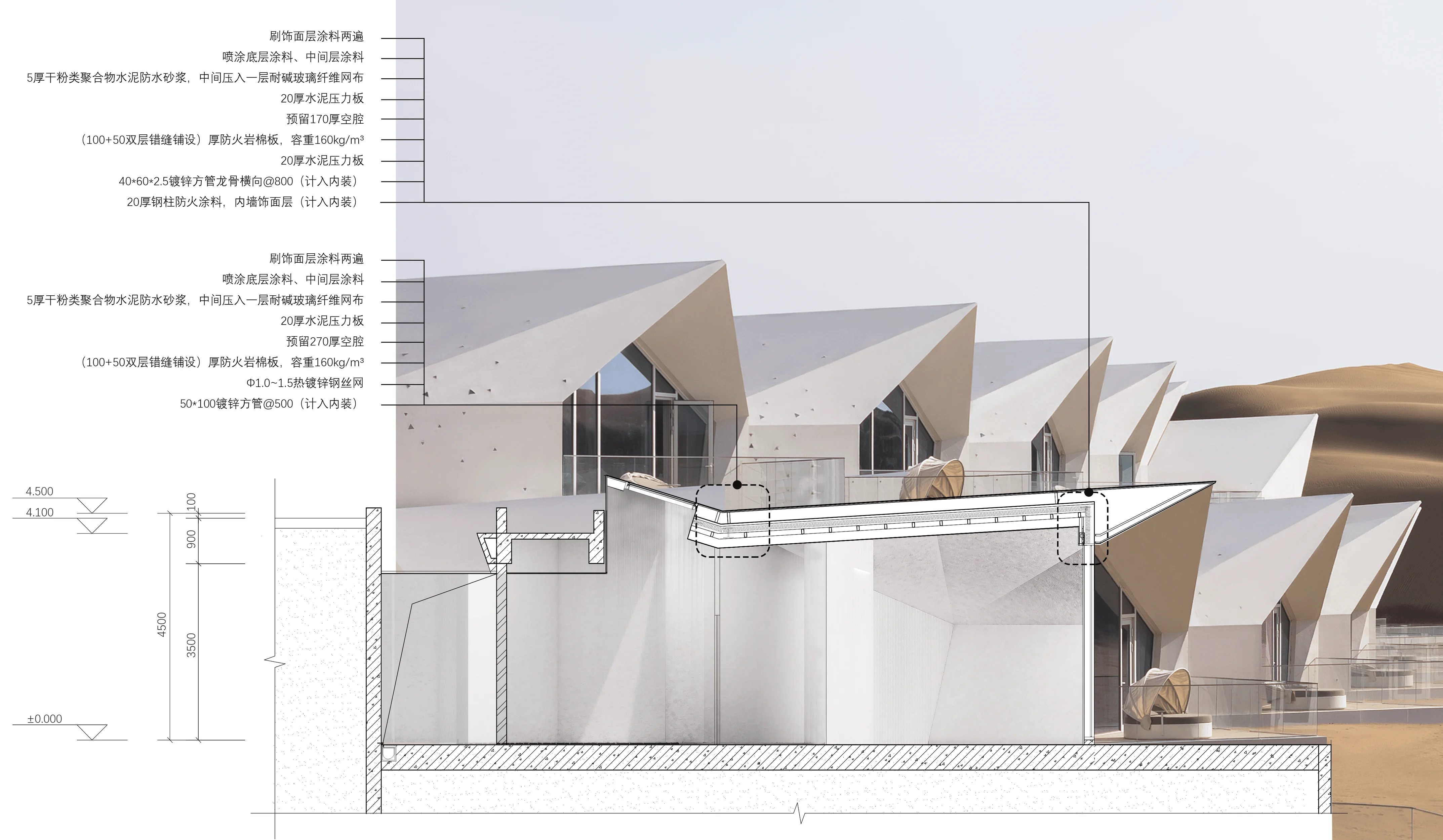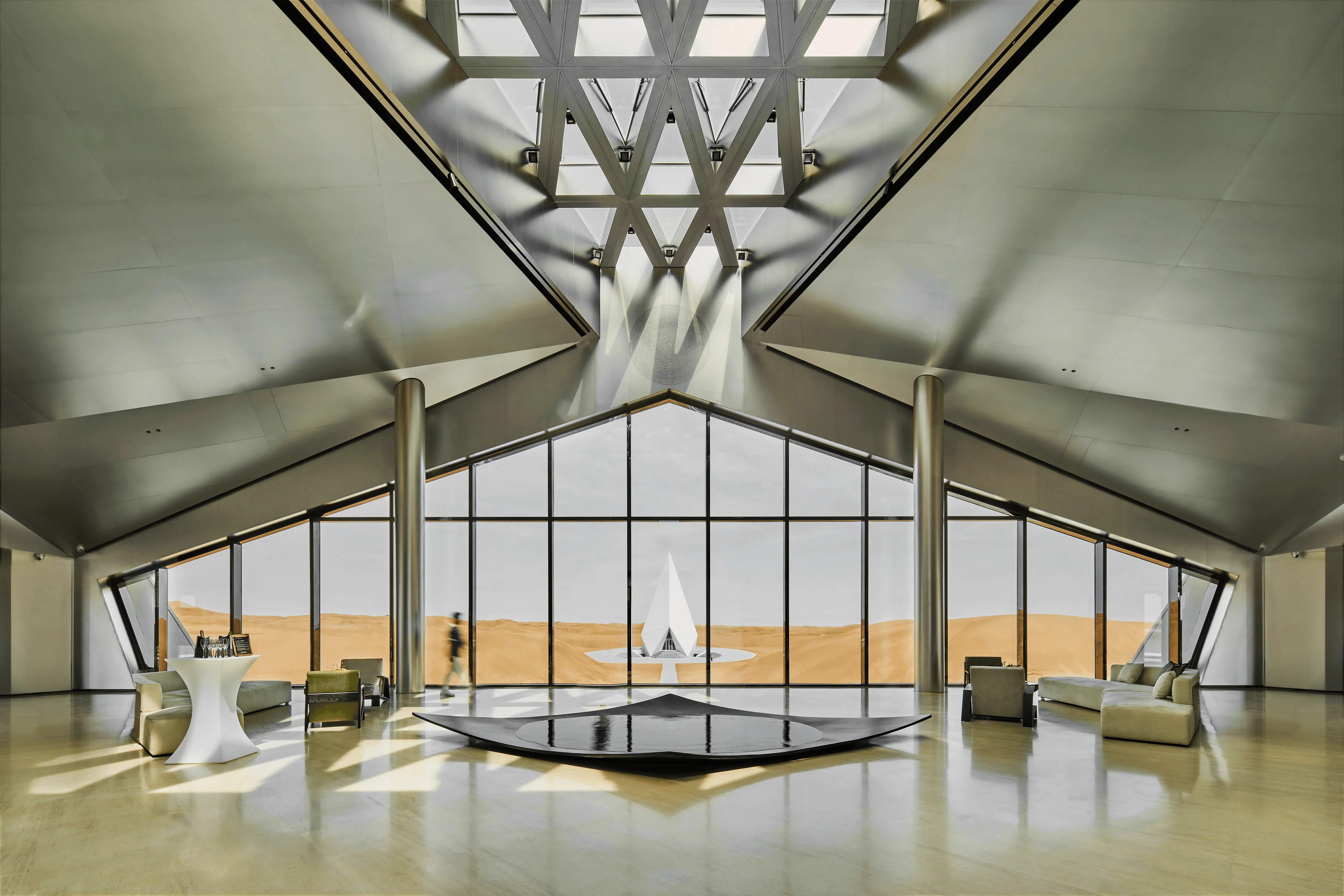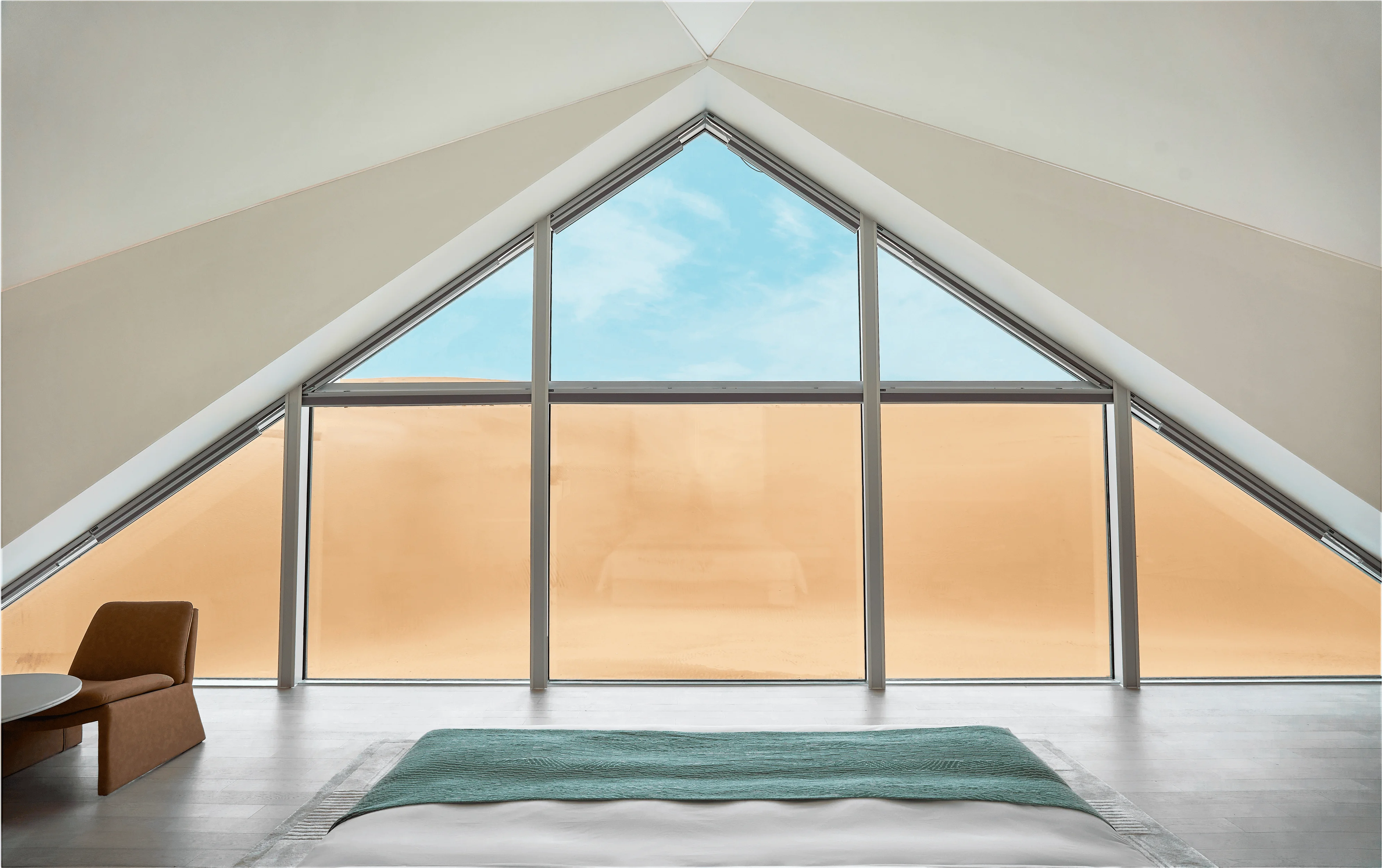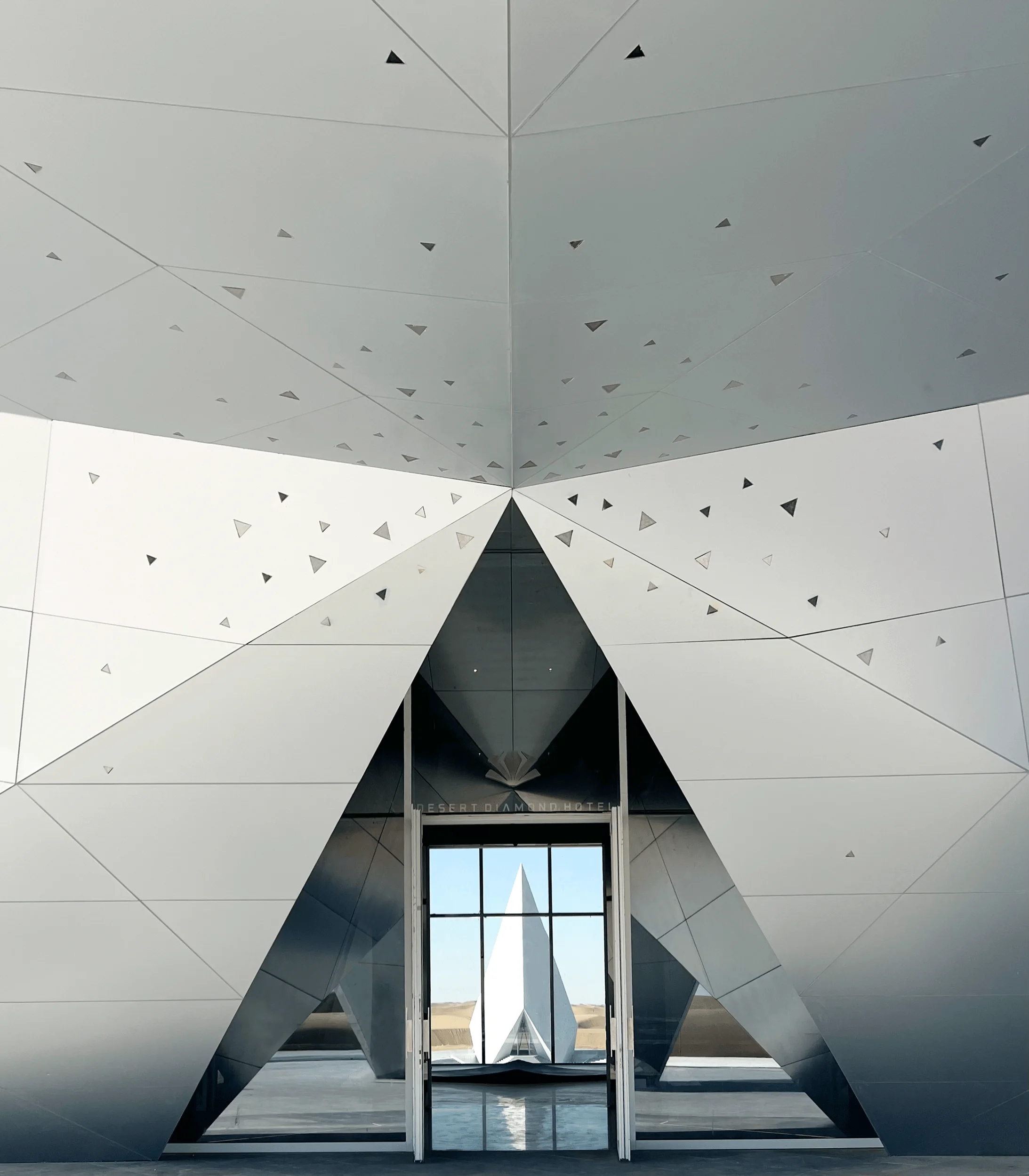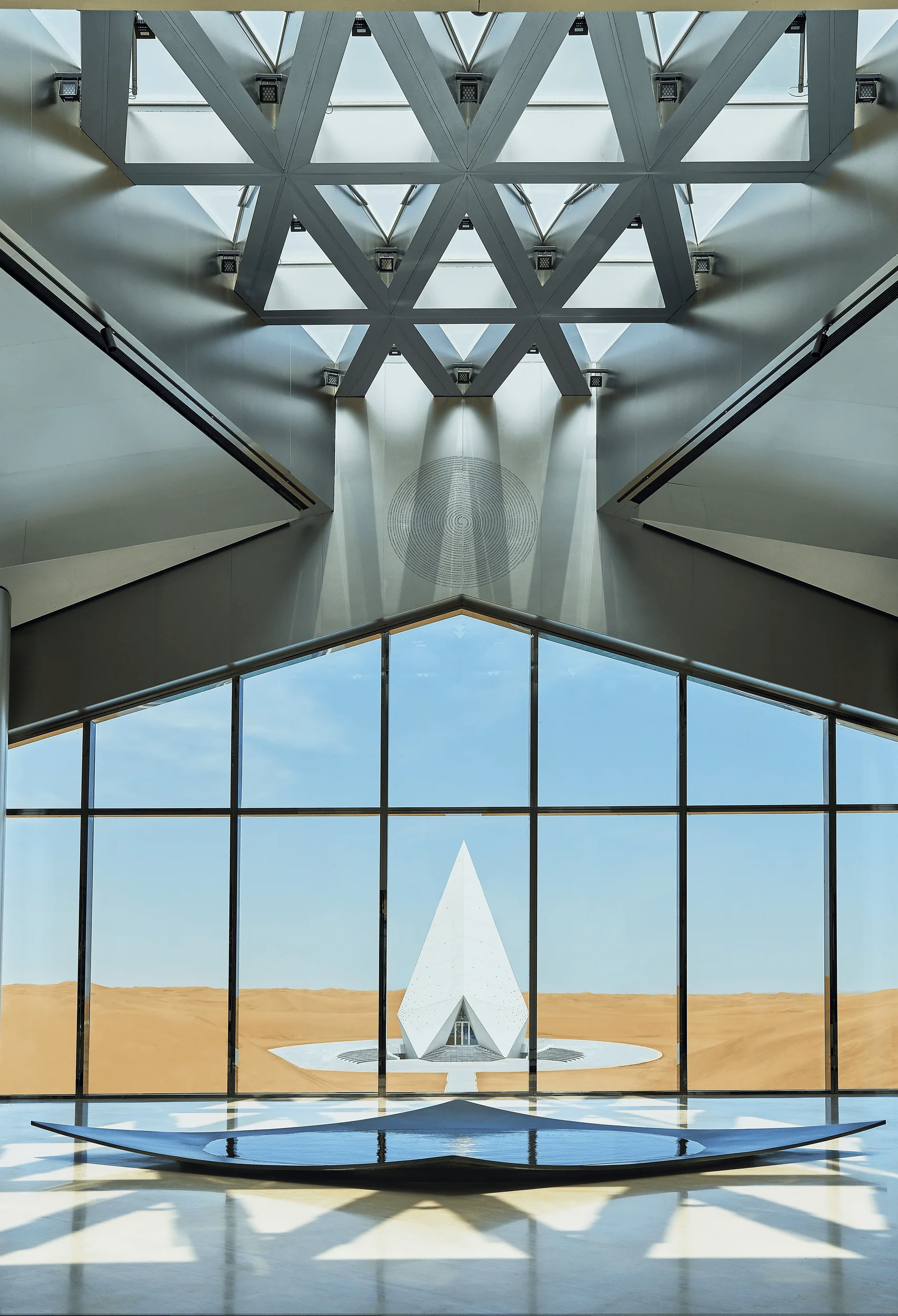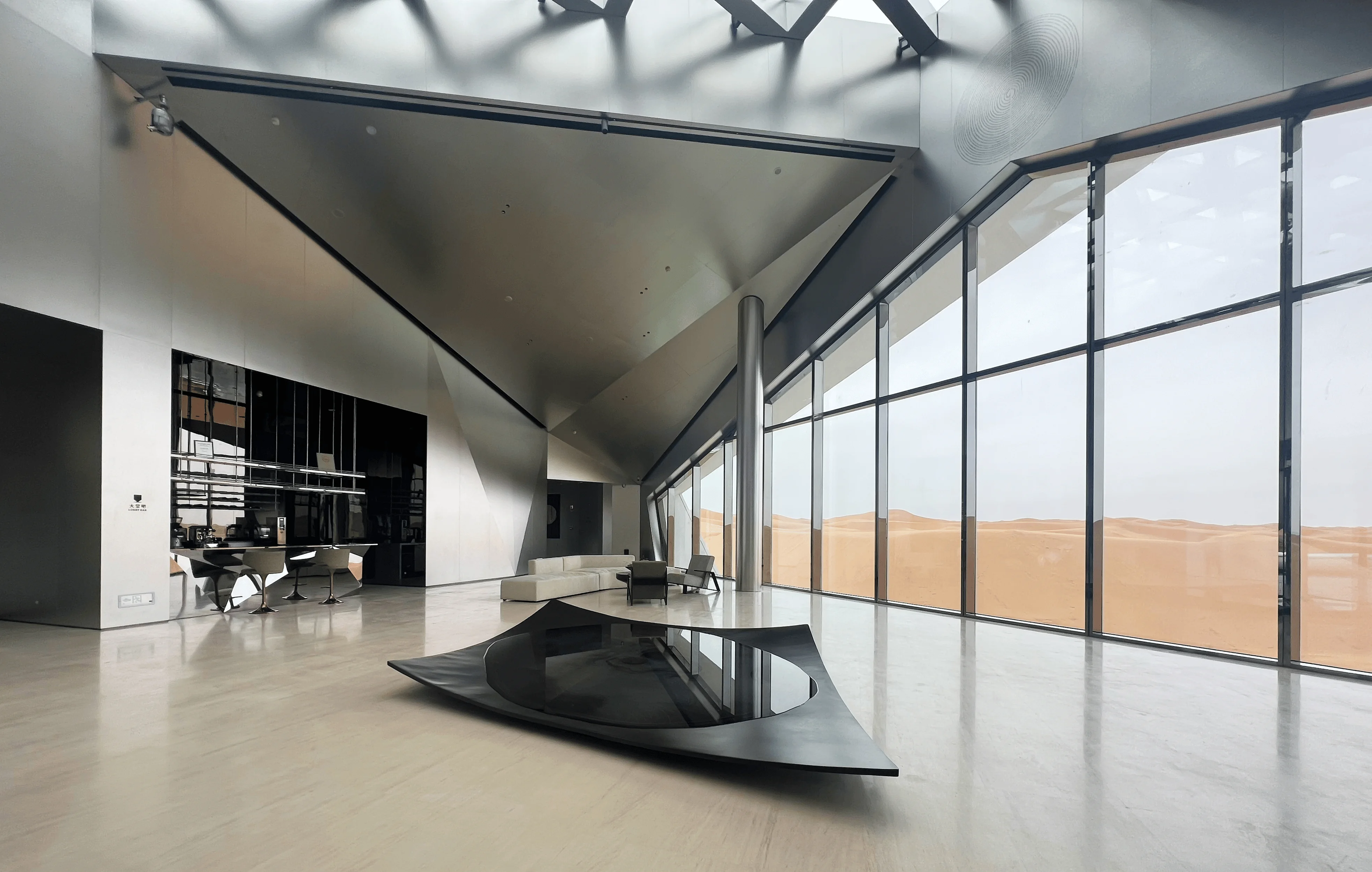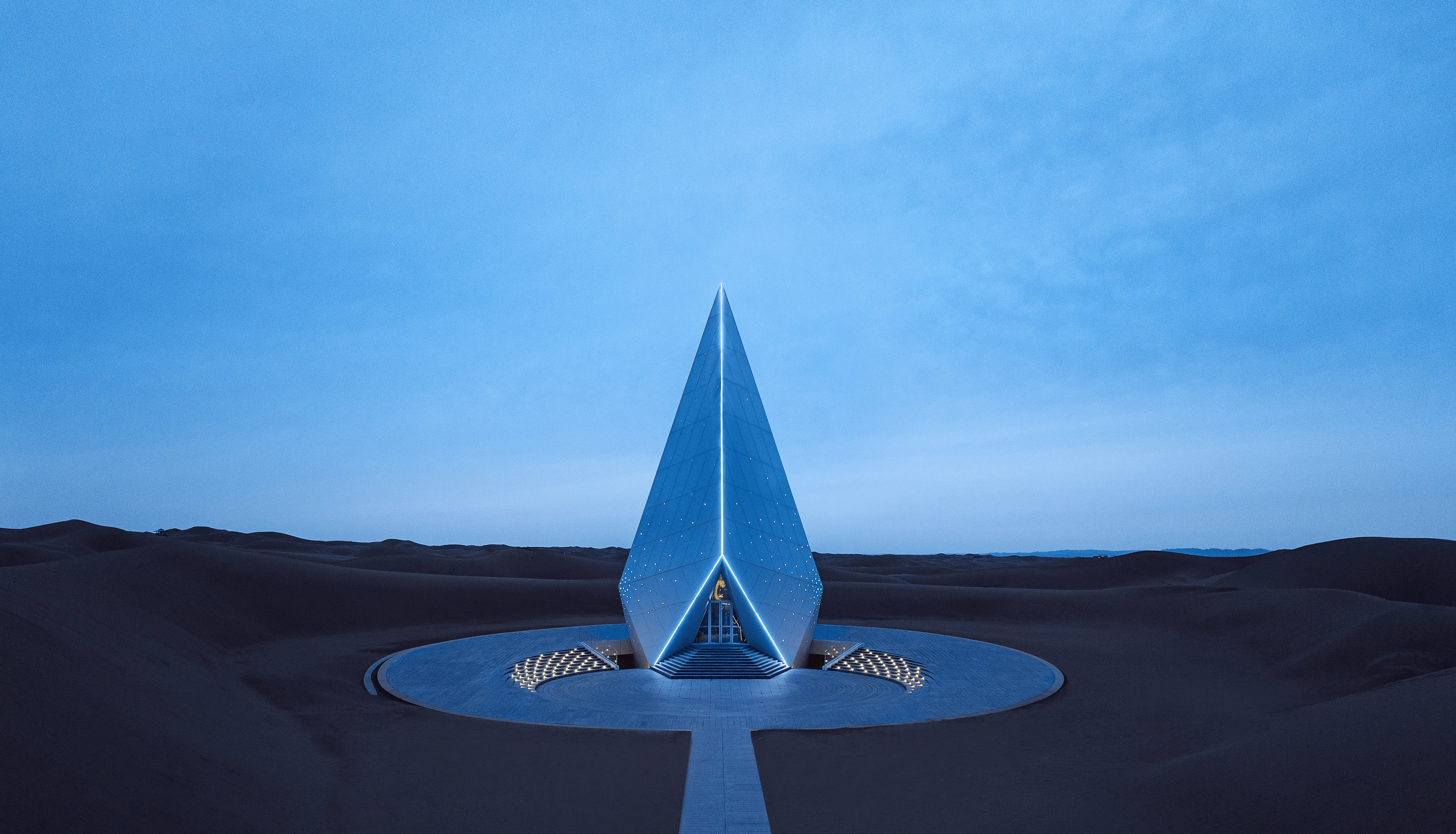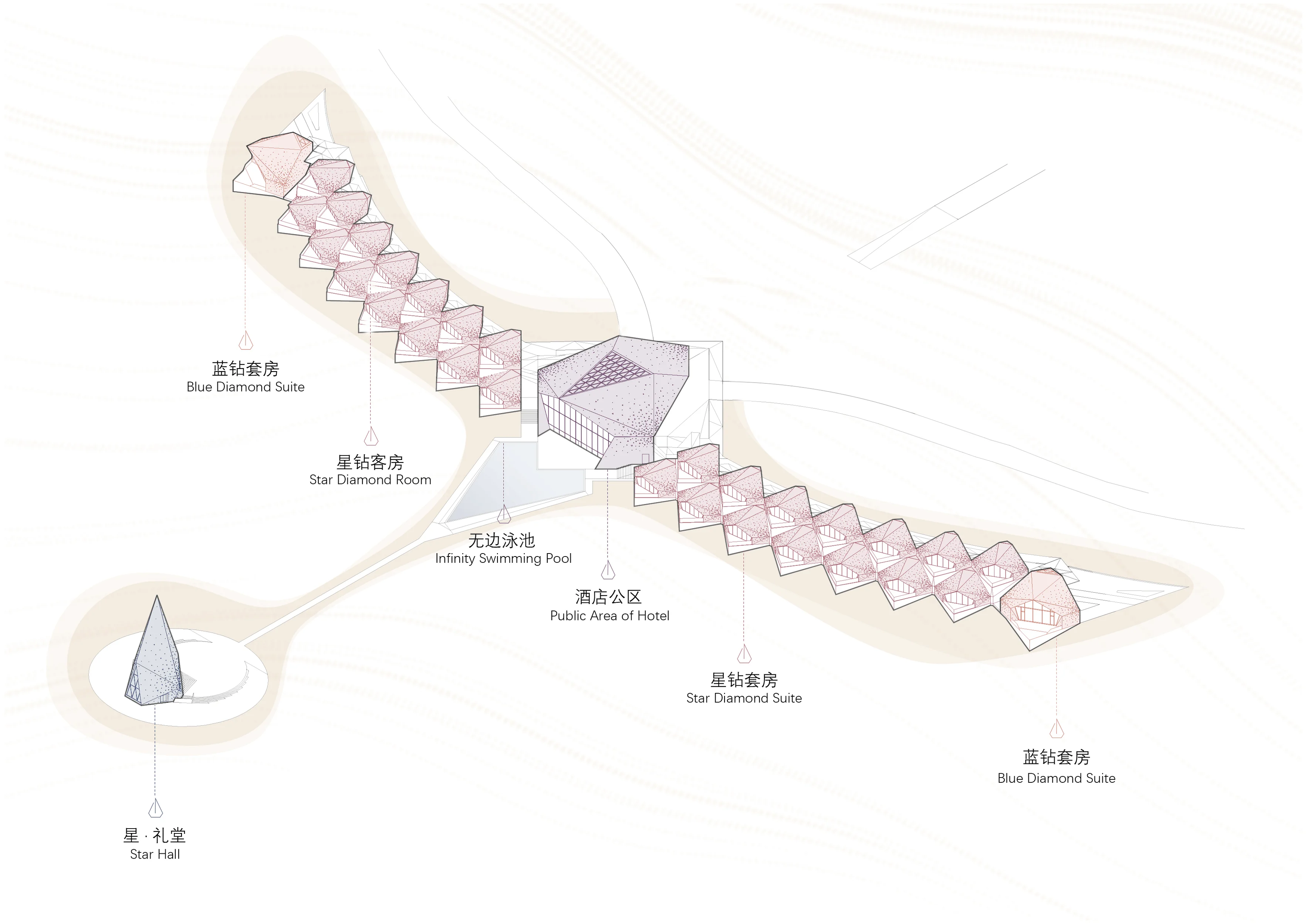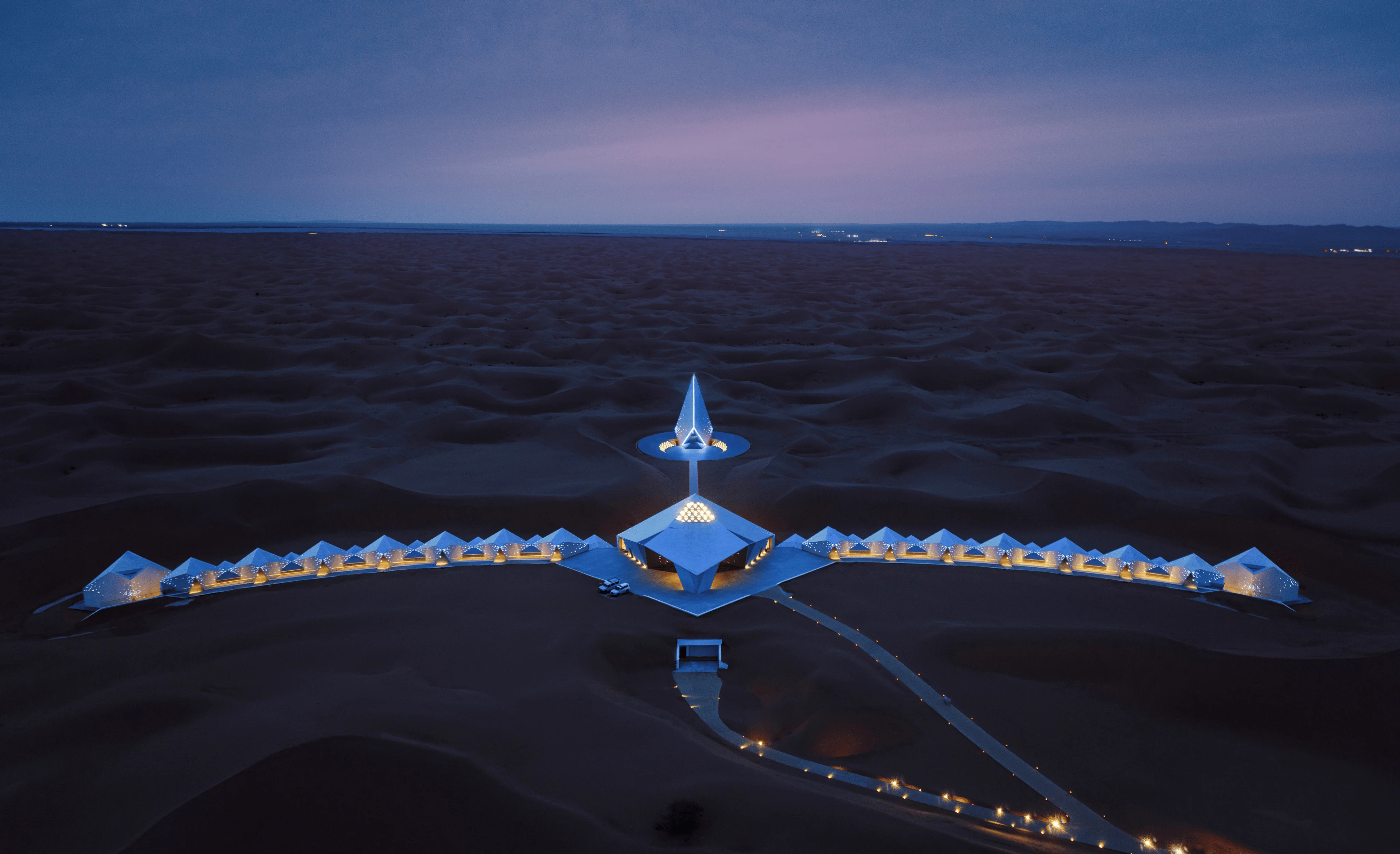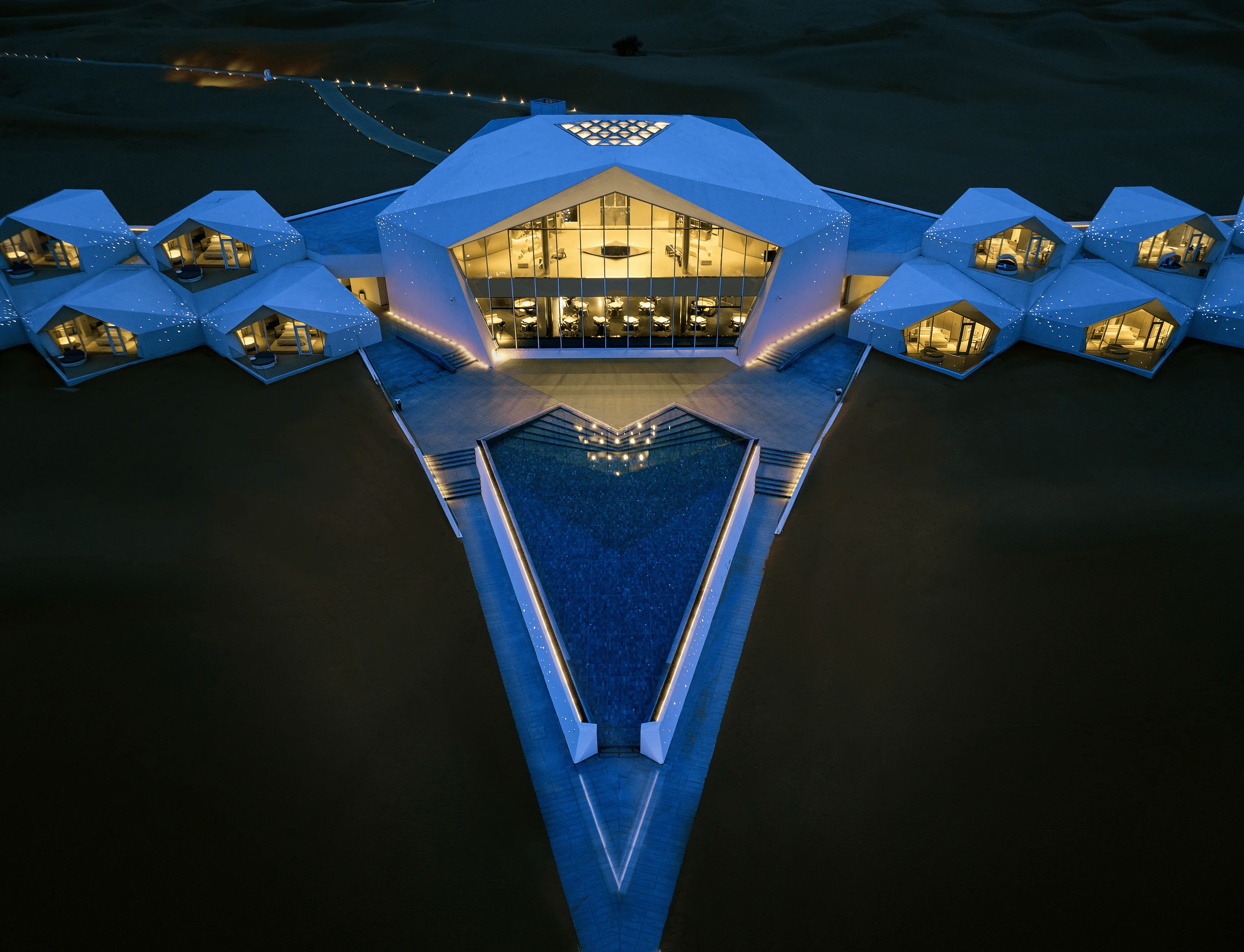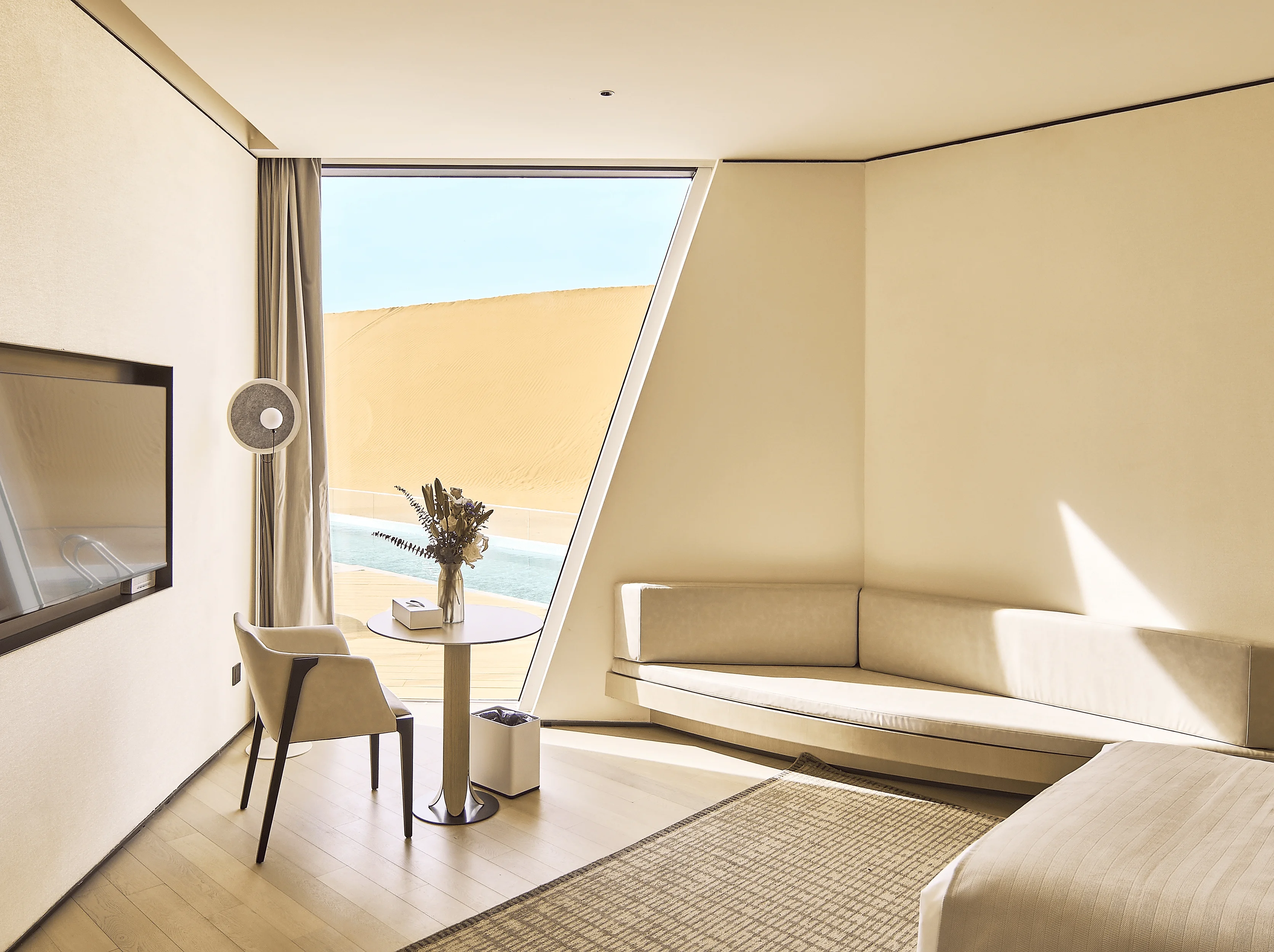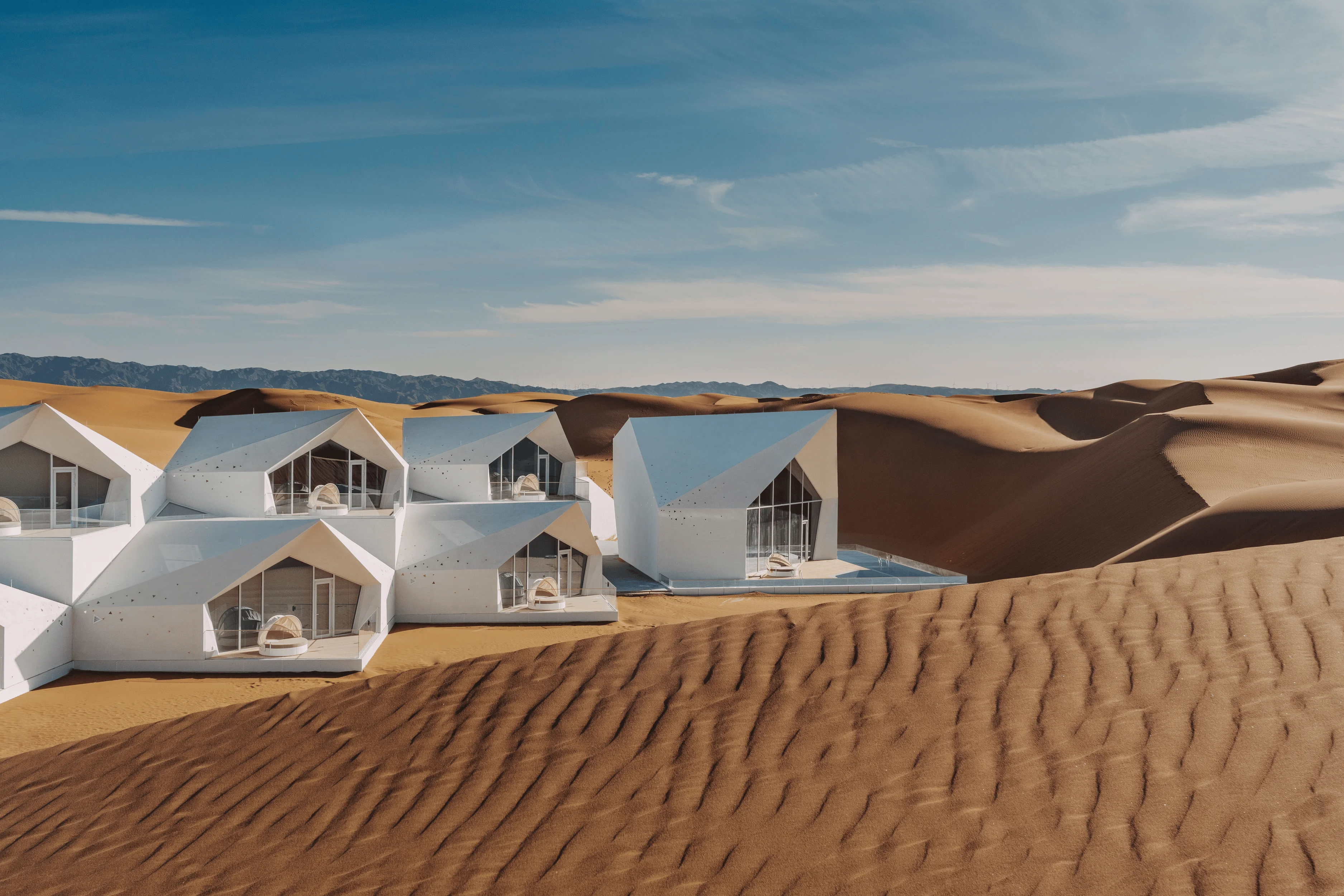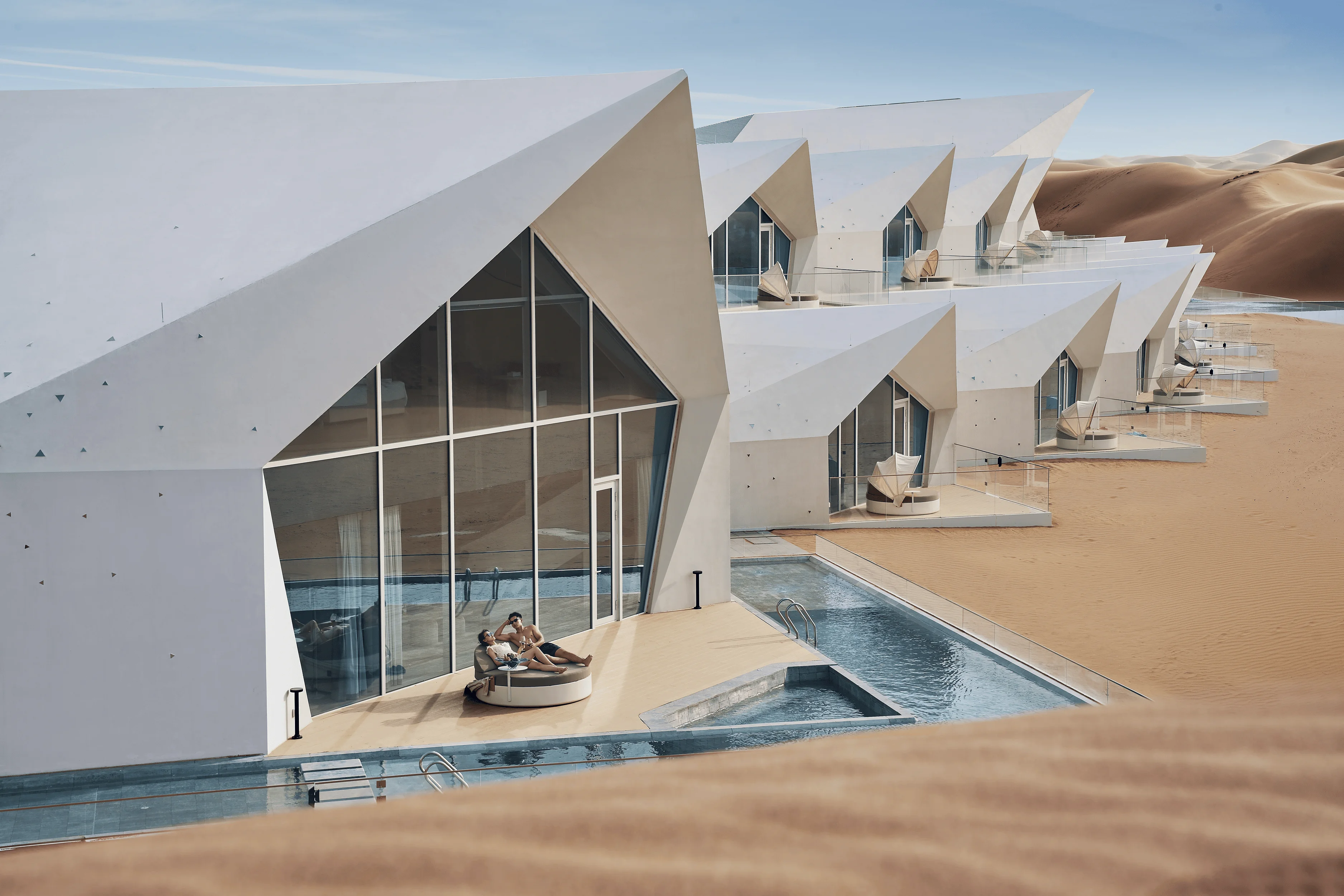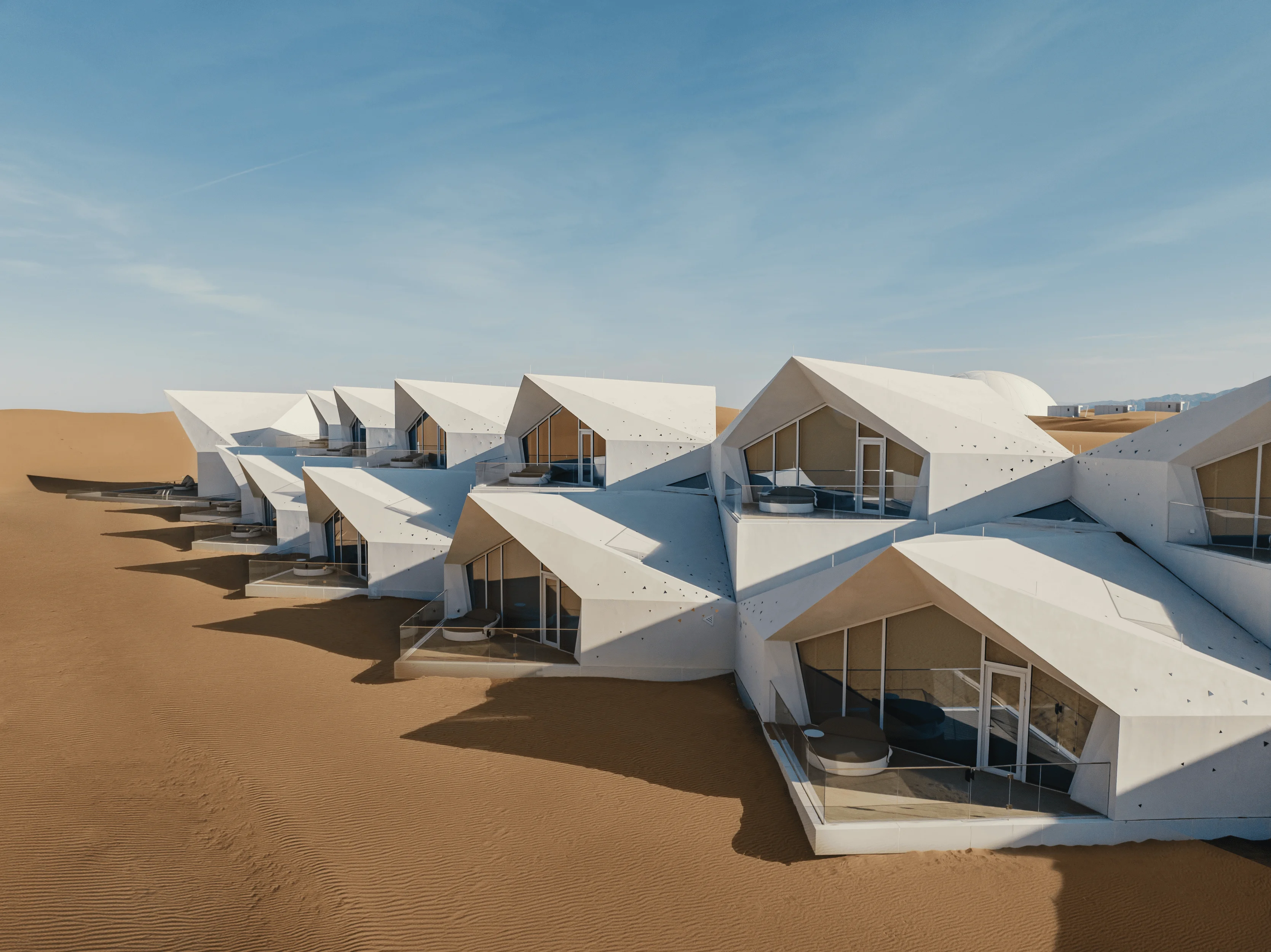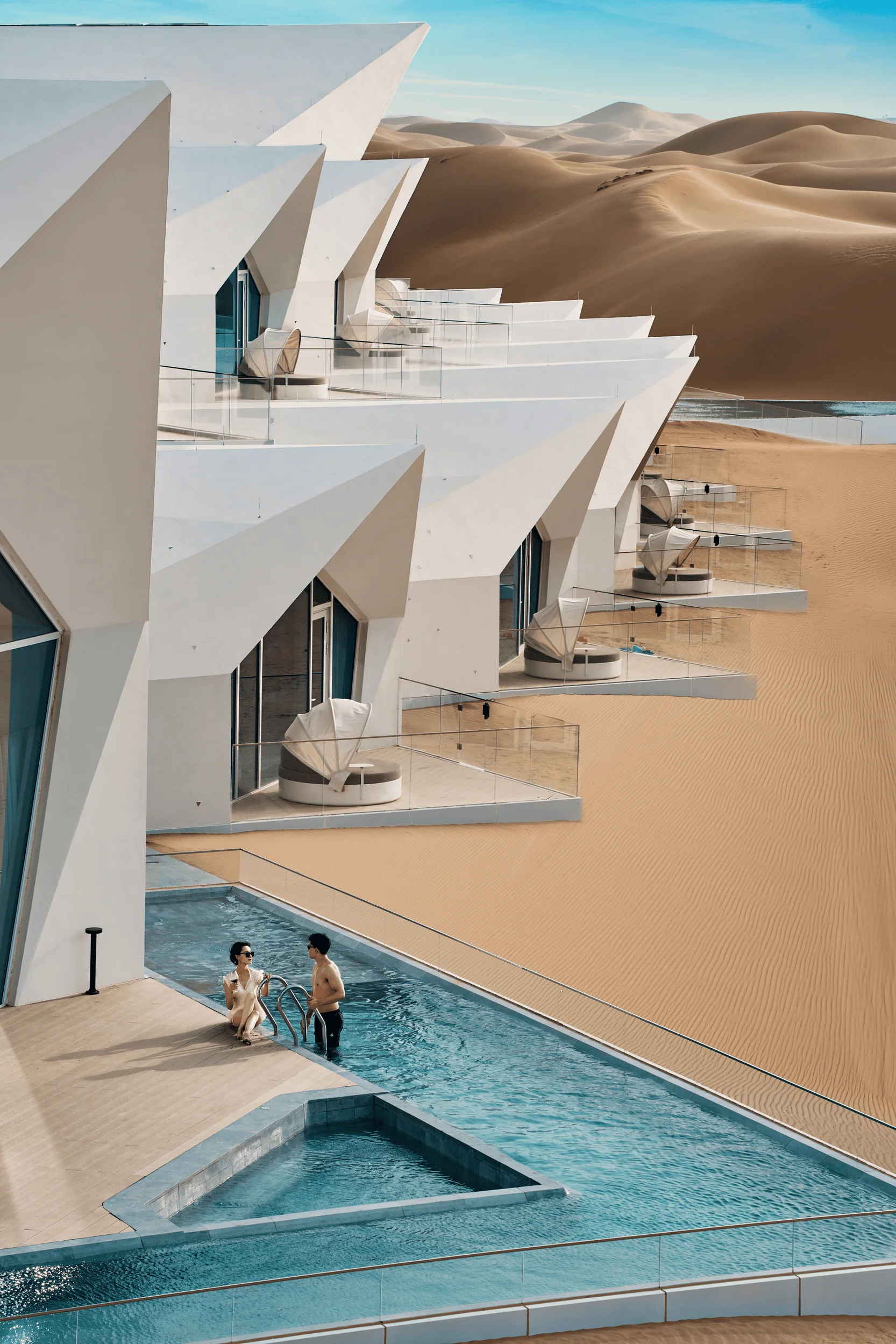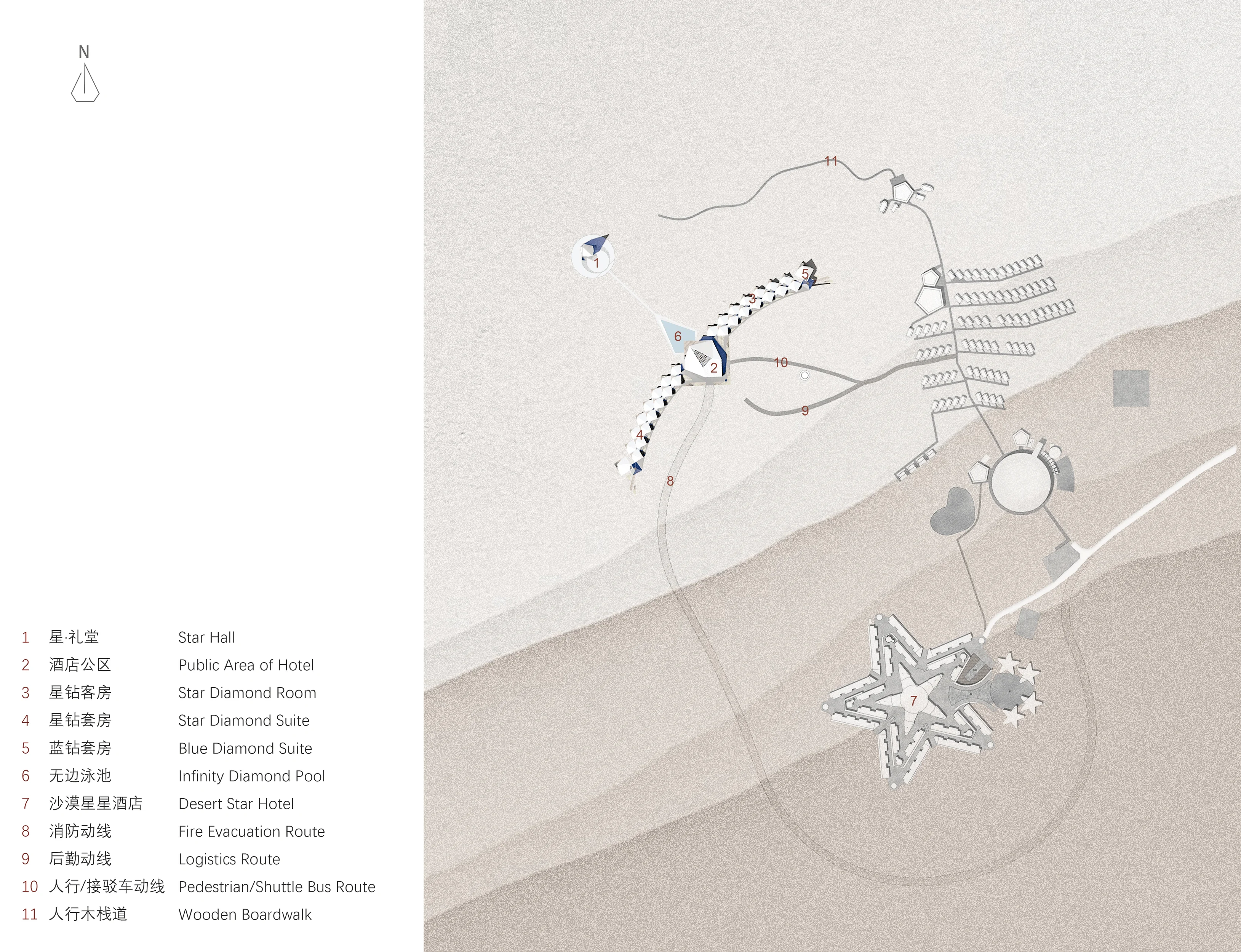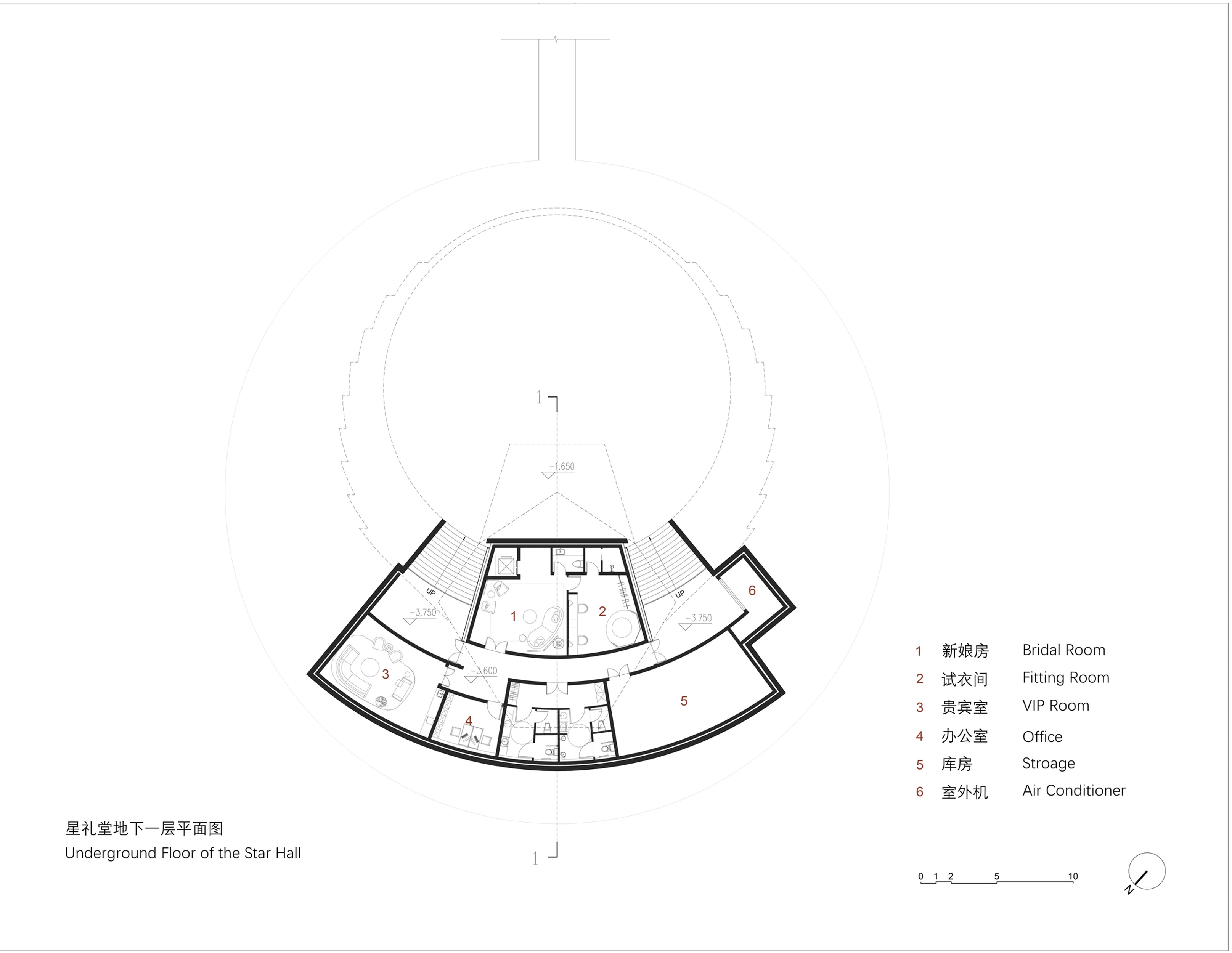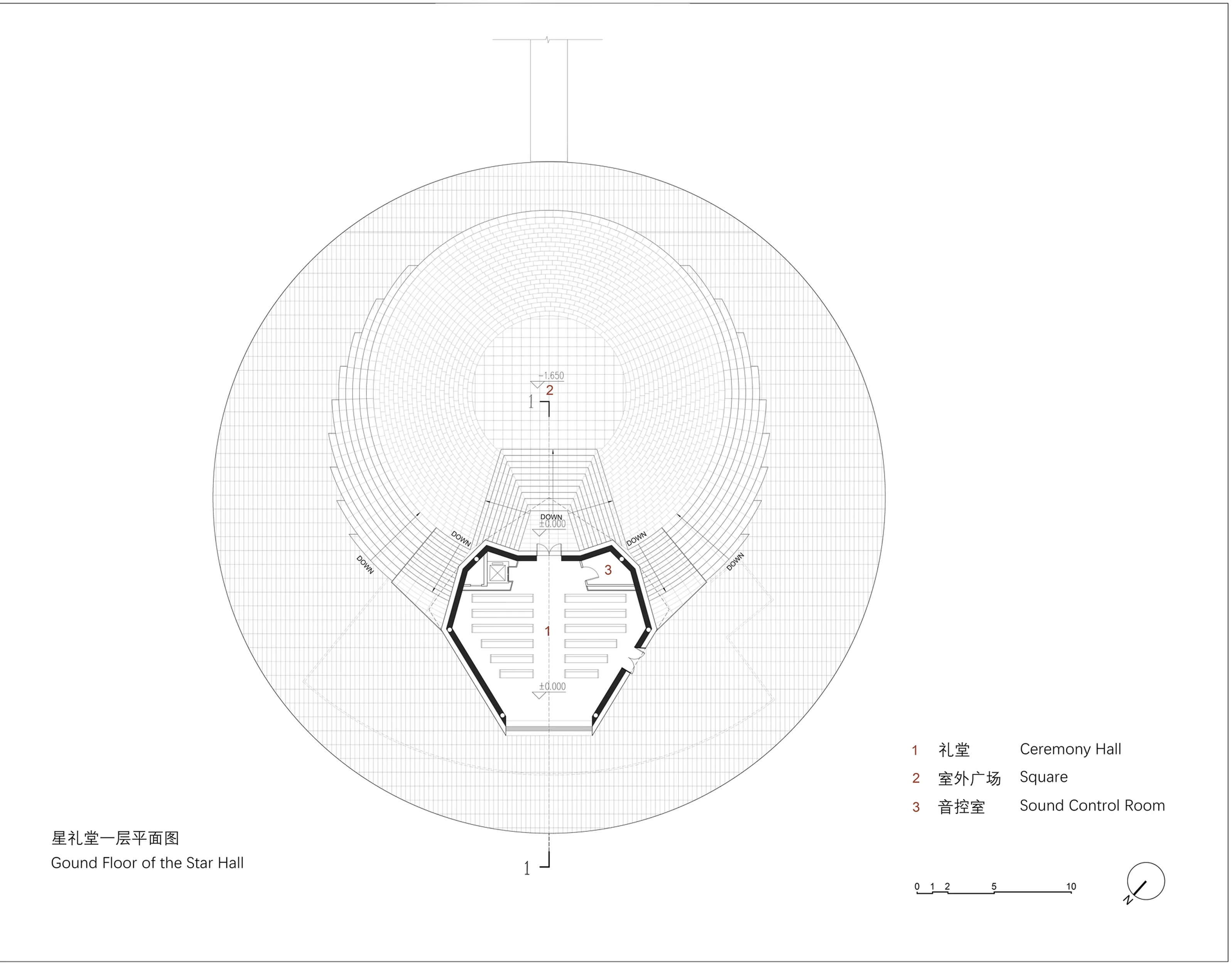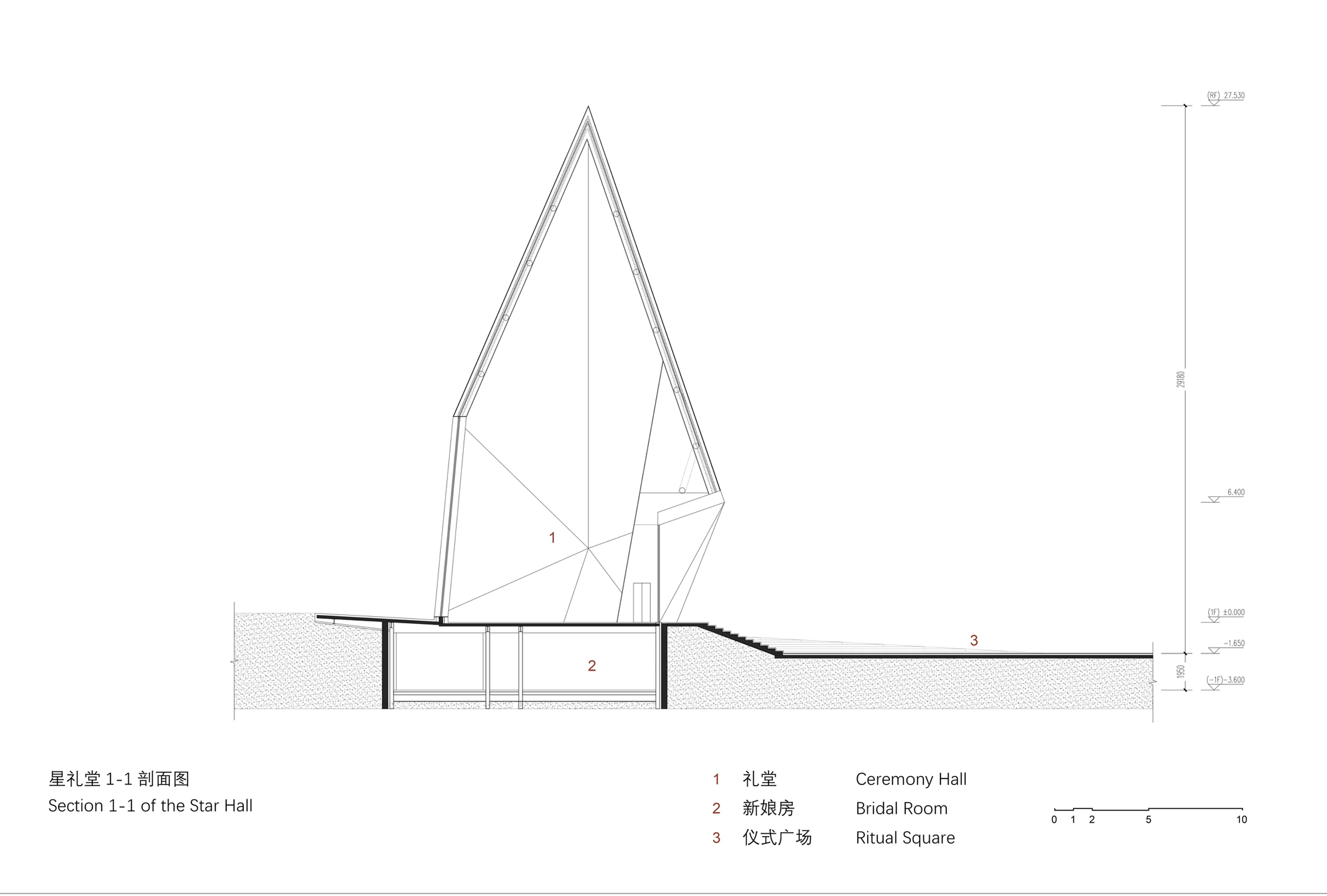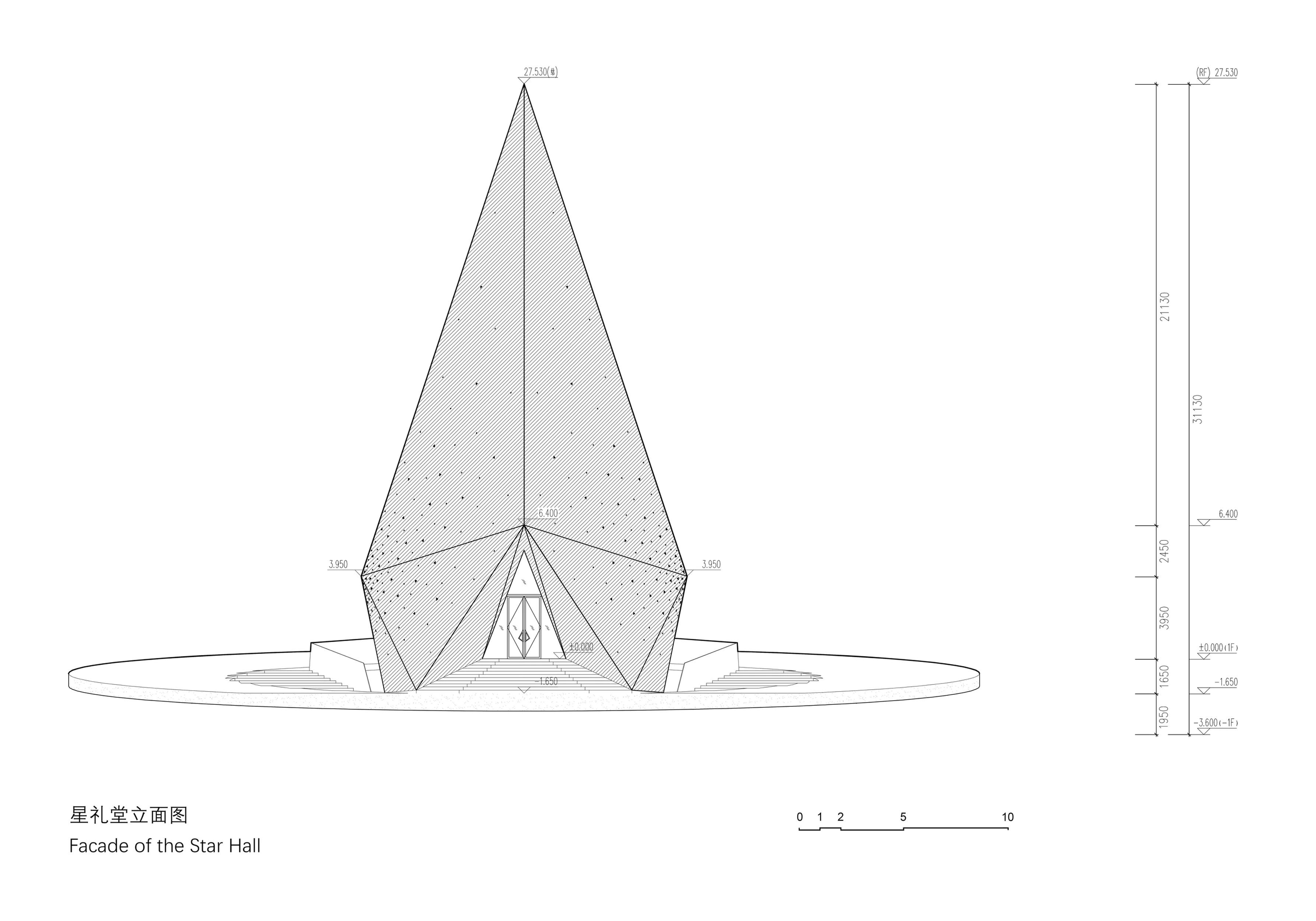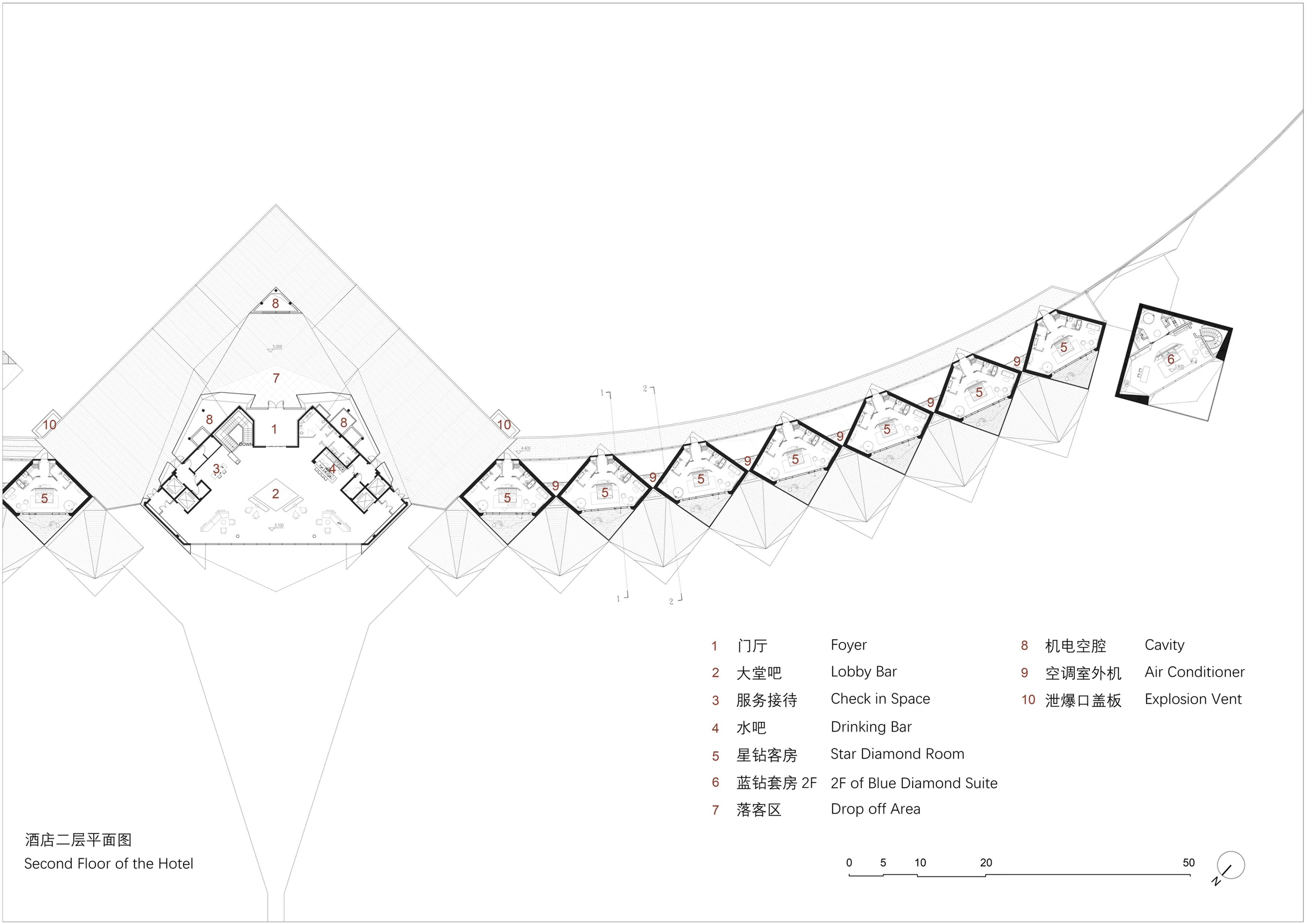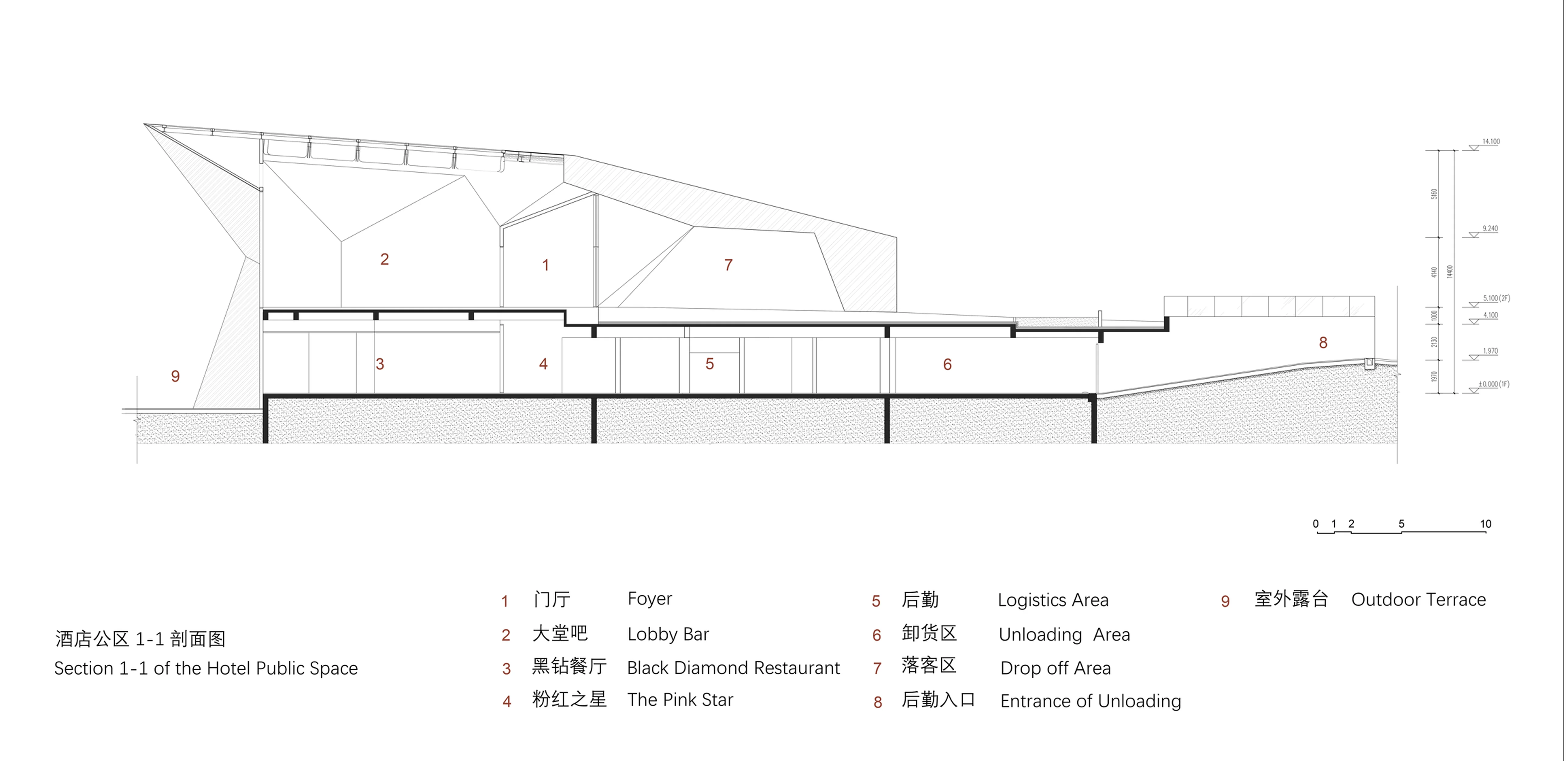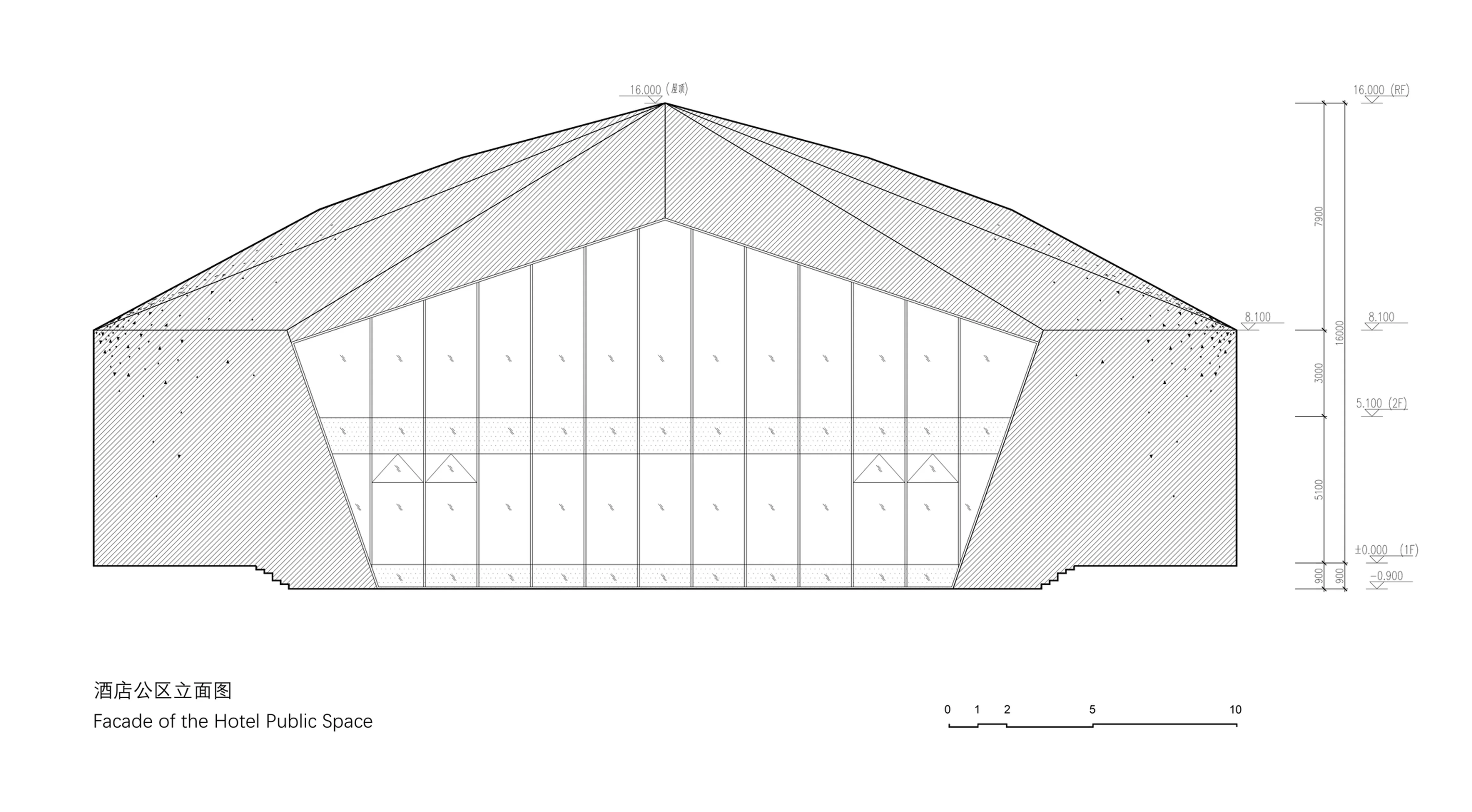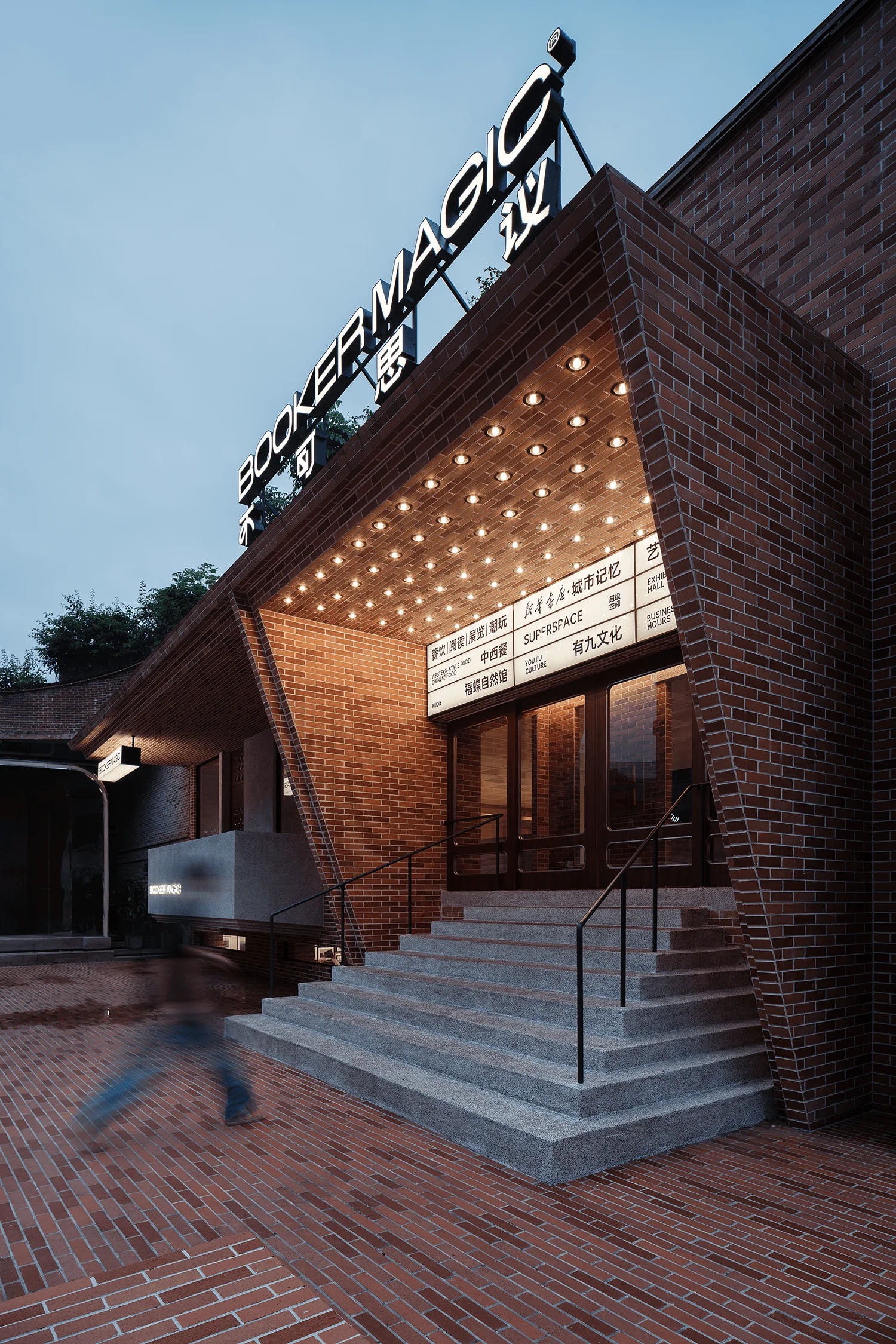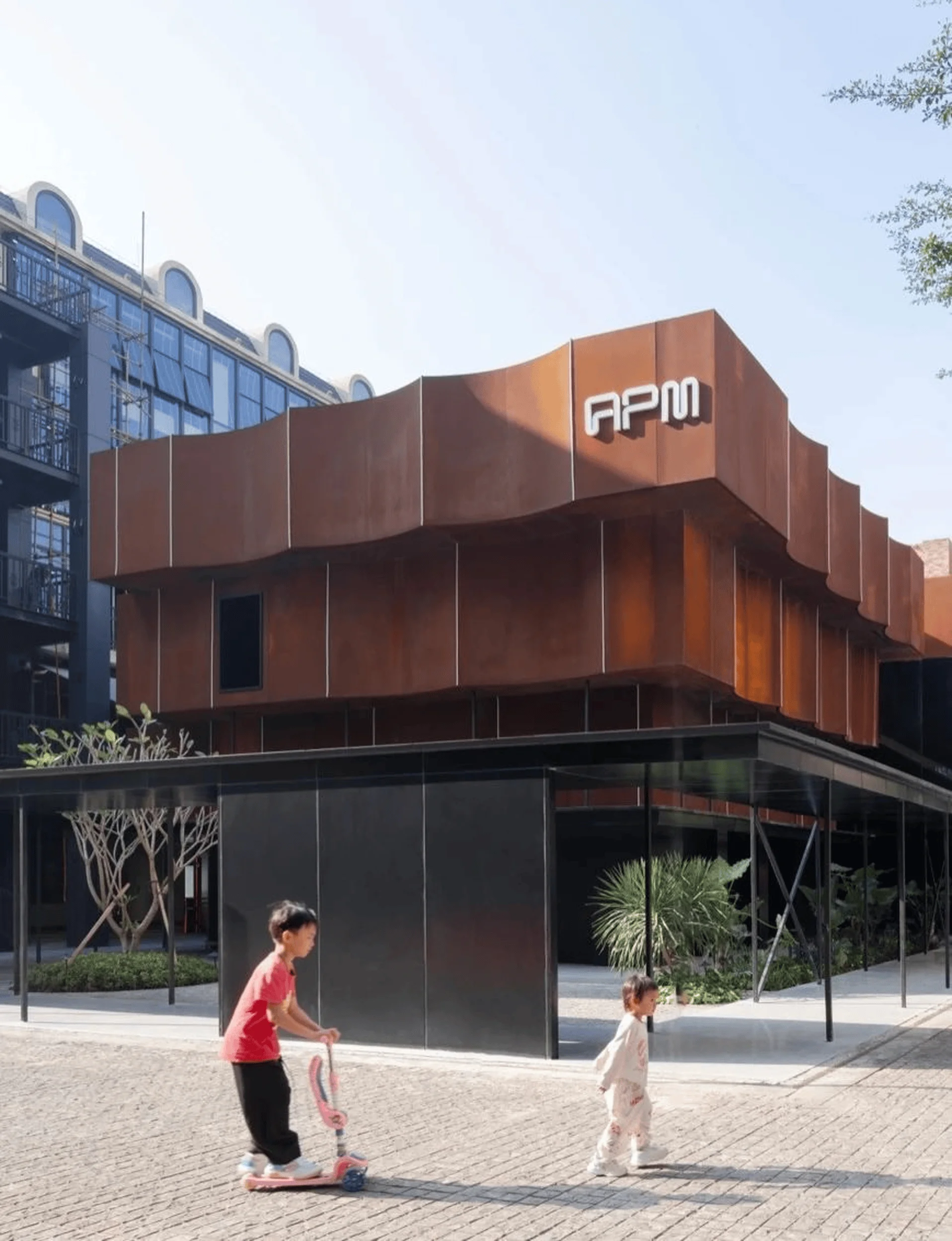Experience unparalleled luxury in the heart of the Tengger Desert at the Zhongwei Desert Diamond Hotel, a stunning architectural marvel.
Contents
Project Genesis: A Desert Oasis
The Zhongwei Desert Diamond Hotel, nestled within Shapotou National Nature Reserve in Ningxia, China, stands as a testament to harmonious coexistence between human creation and the raw beauty of the Tengger Desert. This AAAAA-rated scenic area boasts a unique juxtaposition of desert, river, mountains, and oasis—a breathtaking landscape. The design’s genesis lies in a deep respect for this environment, challenging the conventional idea of desert hospitality while celebrating the area’s natural wonders. This luxurious desert resort hotel design showcases the integration of the man-made structure with its environment, emphasizing the interplay between architecture and the natural world. This luxury desert resort hotel design seamlessly blends with the stunning landscapes of the Tengger desert.
Design Philosophy: The Diamond Metaphor
Inspired by the diamond—a symbol of purity, strength, and eternity—the hotel’s design embodies a powerful yet serene aesthetic. The diamond motif is more than mere aesthetics; it’s a conceptual foundation. The diamond’s inherent properties of brilliance, robustness, and clarity mirror the design’s fundamental intent to create a robust structure that is in tune with its environment. The inherent purity mirrors the vast emptiness of the desert, embodying the concept of ‘void’ which the designers interpret as immense potential. The hotel’s name itself, Zhongwei Desert Diamond Hotel, underscores the central role of this metaphor. The design concept of this unique desert resort hotel, inspired by the diamond, is a harmonious blend of luxury, environmental consciousness, and cultural sensitivity. The design of the resort hotel emphasizes a deep respect for the environment while aiming to provide a unique and unforgettable experience.
Spatial Layout and Planning: A Harmonious Sequence
The hotel’s spatial arrangement follows a carefully orchestrated sequence. A central axis leads from the main entrance, through a series of interconnected spaces, culminating in the Star Hall. This axis creates a sense of progression and ritual, a journey from the exterior desert to the inner sanctum. The public areas, including the all-day dining restaurant, lounge, and outdoor pool, flow seamlessly together. The hotel’s layout ensures a balance between public and private spaces, allowing guests to engage with the desert environment while also enjoying private moments of tranquility. The spatial planning of this stunning desert resort hotel is designed to enhance the guest experience, creating a seamless transition between the indoor and outdoor spaces and enabling visitors to engage with the majestic desert landscape.
Exterior Design and Aesthetics: A Dialogue with the Desert
The hotel’s exterior, a striking geometric structure, presents a calculated contrast to the undulating curves of the sand dunes. The building’s façade, clad in a slightly coarse, greyish-white paint, subtly reflects the desert’s ambient light, creating a mesmerizing play of light and shadow throughout the day and night. Embedded in the façade are triangular star lights, mimicking the glittering effect of sand particles under the sun. These lights pulsate at night, creating a dynamic interaction between the architecture and the desert sky. The building’s exterior design of this extraordinary desert resort hotel creates a visual narrative, blending seamlessly with the surrounding desert landscape while maintaining its distinct architectural identity. The architectural design of this project highlights the skillful use of light and shadow to create an impressive visual impact.
Technical Details and Sustainability: Respecting the Environment
The hotel’s design prioritizes sustainability and environmental consciousness. Its low-profile structure minimizes its impact on the desert landscape, reducing wind erosion, thereby demonstrating respect for its surroundings. Careful consideration of the desert’s harsh climate—extreme temperature fluctuations, intense UV radiation, and sandstorms—informed material selection and construction techniques. The use of locally sourced materials whenever possible reduces the carbon footprint of the project, illustrating a profound commitment to sustainable practices. This luxurious desert resort hotel showcases a thoughtful approach to sustainability, reducing its impact on the environment and maximizing the use of resources.
Social and Cultural Impact: A Destination for Connection
The Zhongwei Desert Diamond Hotel seeks to foster a connection between visitors and the unique cultural heritage of Ningxia, widely known as the “home of stars.” The hotel’s design aims to transcend the typical tourist experience, providing an opportunity for spiritual renewal and profound connection with nature. The Star Hall, the hotel’s centerpiece, offers a space for ceremonies and events, further enhancing the hotel’s social and cultural significance. This architectural marvel serves not only as a unique and unforgettable getaway but also as a cultural landmark within the region. The design of the luxury resort hotel fosters a sense of community and promotes cultural exchange.
Economic Considerations: A Sustainable Investment
The hotel’s design represents a sophisticated balance between luxury and economic viability. Its unique architecture and thoughtful amenities are designed to attract a high-end clientele, creating a sustainable economic model for the region. The project’s impact extends beyond tourism, contributing to the overall economic development of Shapotou. This innovative luxury resort project promises both a luxurious experience for guests and a significant economic boost to the local community, underscoring the potential for sustainable development.
Construction Process and Management: Overcoming Challenges
The construction of the Zhongwei Desert Diamond Hotel presented significant logistical challenges due to the harsh desert environment. The project’s construction involved meticulous planning and execution to overcome the obstacles posed by extreme weather conditions and logistical limitations. The team successfully navigated the challenges, bringing together expertise in architecture, engineering, and construction to deliver a superior final product. The successful completion of this extraordinary project is a testament to the ingenuity and expertise of the construction team, demonstrating their ability to overcome challenges in a demanding environment.
Post-Completion Evaluation and Feedback: A Vision Realized
The completed hotel has exceeded expectations, transforming a desolate landscape into a vibrant destination. Initial feedback has been overwhelmingly positive, highlighting the hotel’s unique design, luxurious amenities, and stunning desert setting. The hotel’s integration of architecture, nature, and cultural experience has created a memorable guest experience, demonstrating the project’s success in fulfilling its ambitious goals. The project’s success underscores the potential of innovative design to create transformative experiences and revitalize destinations.
Conclusion: A Desert Utopia
The Zhongwei Desert Diamond Hotel stands as a powerful symbol of human ingenuity and respect for nature. It is a place where the extraordinary beauty of the Tengger Desert is celebrated, and where visitors can experience the transformative power of connection with the natural world. This desert resort hotel is a testament to the ability of architecture to create exceptional experiences that combine luxury, sustainability, and cultural sensitivity. The hotel’s success lies in its ability to seamlessly blend modern luxury with the raw, untamed beauty of the desert environment, ultimately creating a truly unforgettable experience. The Zhongwei Desert Diamond Hotel, a remarkable feat of architectural design, successfully demonstrates a harmonious blend of luxury and environmental sensitivity. This hotel design is an incredible example of a successful integration of architecture, culture, and nature, promising a unique and unforgettable experience for its guests.
Project Information:
Project Type: Hotel
Architect: Shuishi Design – Micun Studio
Area: 6866 square meters
Year: 2024
Country: China
Main Materials: Greyish-white paint, mirror materials
Photographer: Xia Zhi, Xingxing Hotel, Xie Yuan


